The best pannier racks and pannier bags for bikes 2025: sturdy and high-volume options put to the test
Bike panniers are a great option to carry luggage if you're going touring or using your bike for commuting
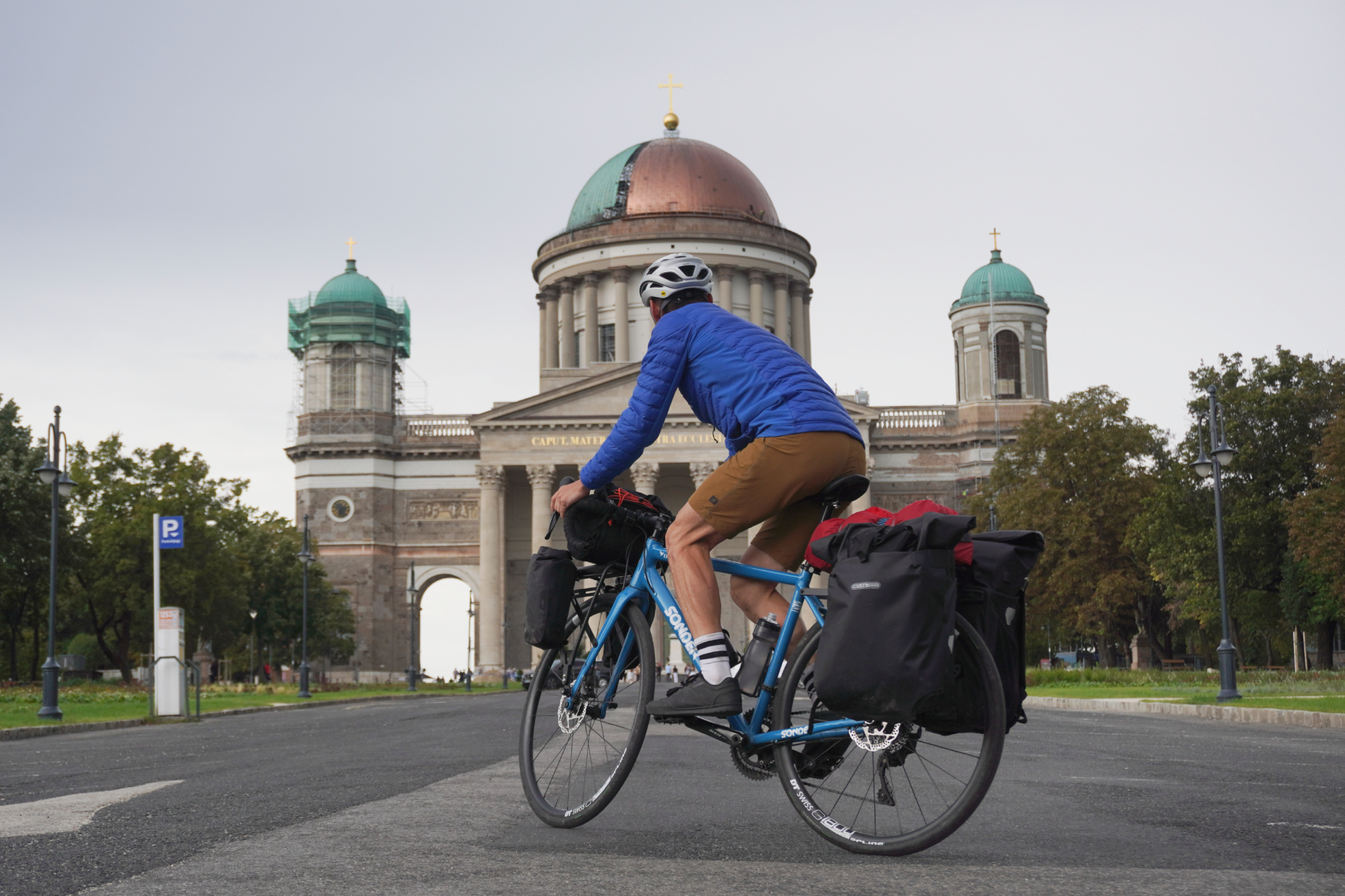
- The Quick List
- Best Pannier Racks
- 1. Best overall rack
- 2. Best for compatibility
- 3. Best for ease of installation
- 4. Best for heavy loads
- 5. Best for versatility
- 6. Best budget
- Best pannier bags
- 1. Best overall bag
- 2. Best for wet weather
- 3. Best for versatility
- 4. Best for urban riding
- 5. Best for protection
- 6. Most versatile
- Honourable mention
- How we test
- How to choose
- FAQs
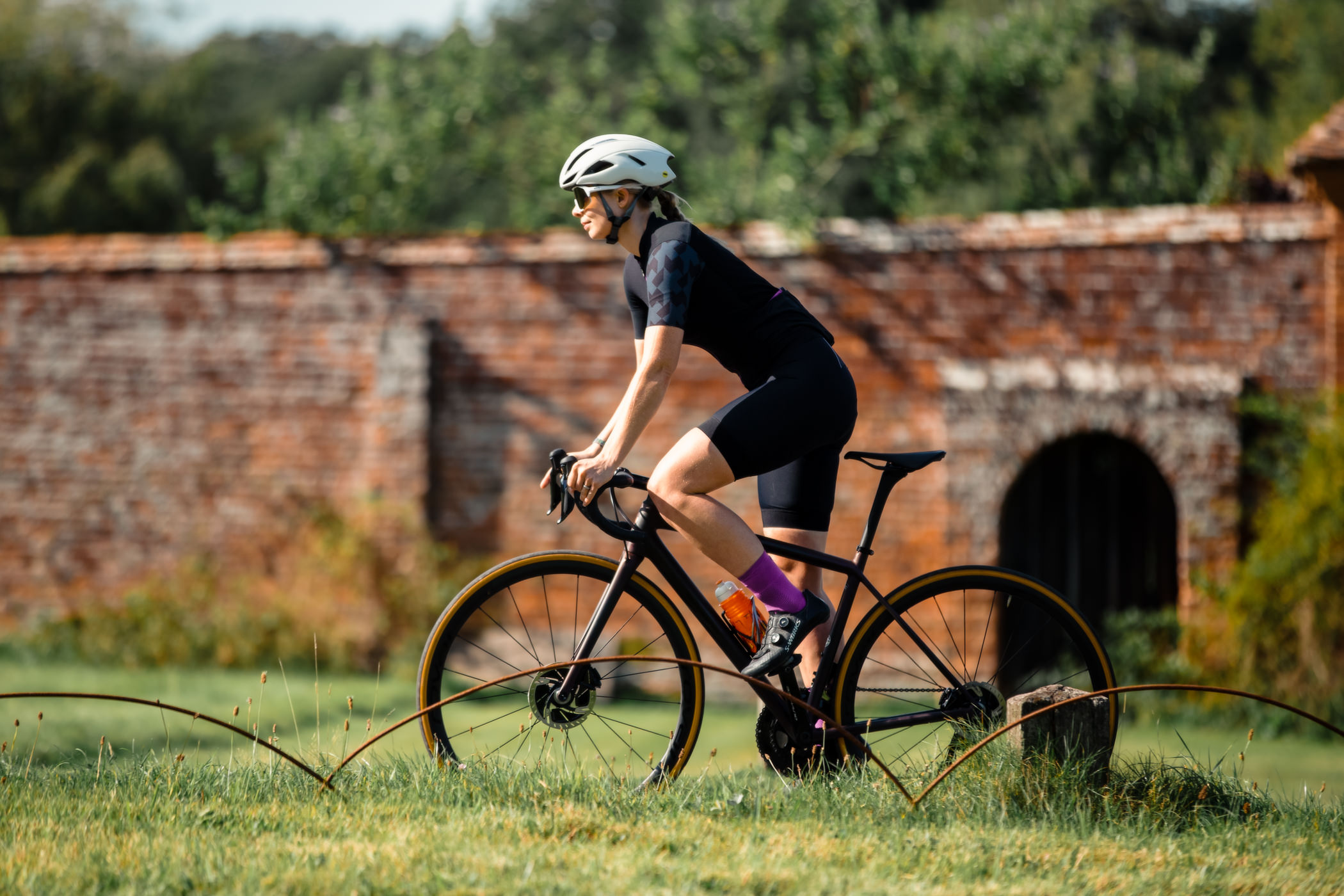
The best bike panniers bear the load of any cargo you have, so you don't have to. Not only do they replace the best backpacks for cycling, but they can carry far heavier loads, most importantly keeping that weight low down for a better balance.
Pannier racks and bags are popular among those who ride the best commuter bikes, touring bikes, and really anyone who needs to carry a substantial volume as they offer a more secure load, heavier load capacity, and ease of packing. They're also great for day-to-day tasks like the weekly shop. However, they have fallen out of favour in recent years with the rise of the best gravel bikes. Those who wish to take on shorter tours and weekend rides tend to favour the best bikepacking bags.
Panniers are usually fitted to the rear of the bike, but if you have a particularly heavy load to carry, a front pannier can better distribute this weight. Panniers have certainly become much easier to fit and more universally compatible with our best overall rack, the Ortlieb Quick Rack. This rack offers a super simple setup, flexibility, and decent weight capacity with very few drawbacks.
The best pannier setup is a story of two halves. This is why our testing goes hand in hand, as you can't test racks without bags and vice versa. The majority of our testing is conducted on our commutes and running errands. However, some of the Cycling Weekly team do load up from time to time and venture further afield. You can read more on how we test pannier racks and bags at the bottom of this guide.
The Quick List
Best pannier racks
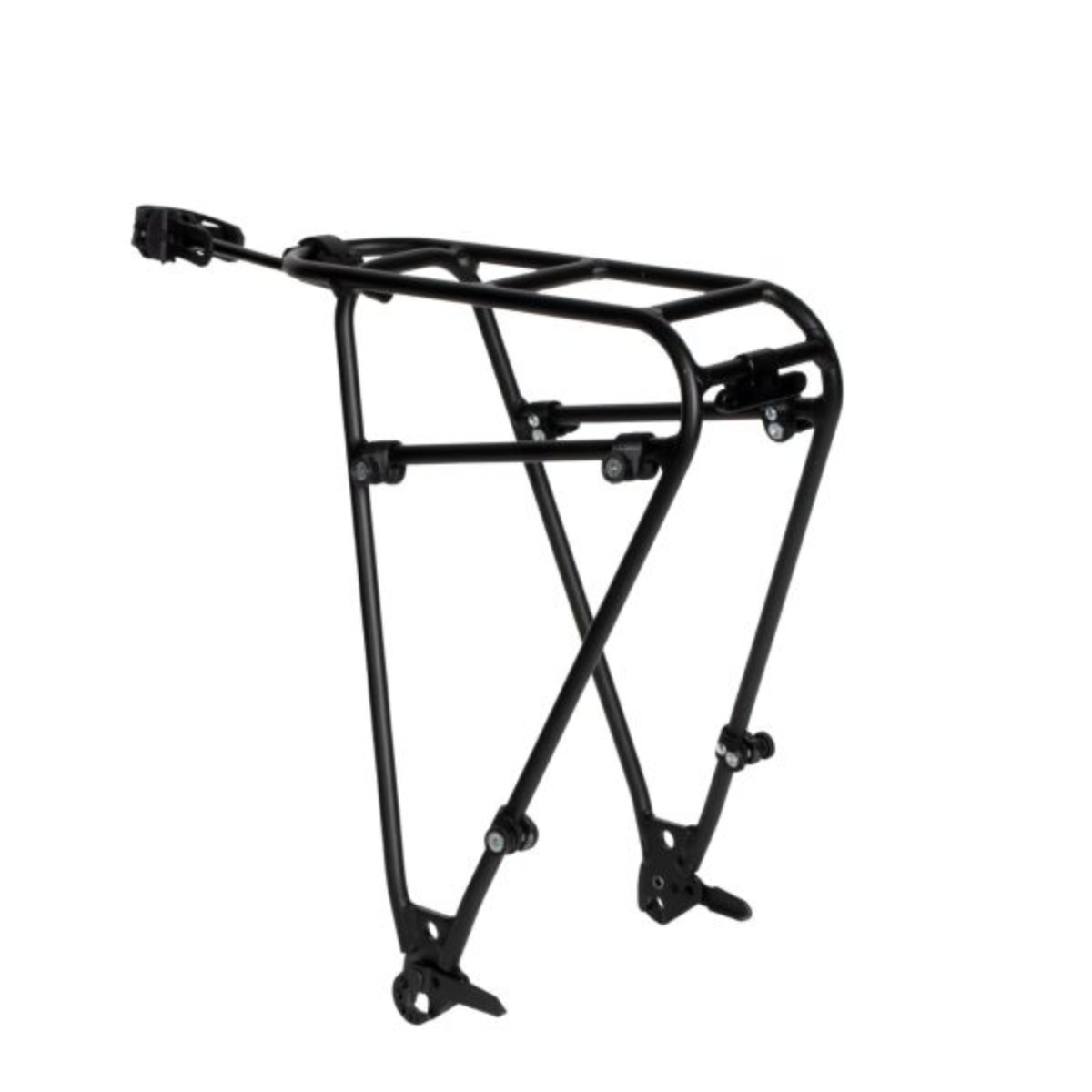
The Ortlieb Quick Rack is a breeze to install and can be removed or remounted in under a minute, making it well-suited to those with just one bike or who infrequently use a rack.
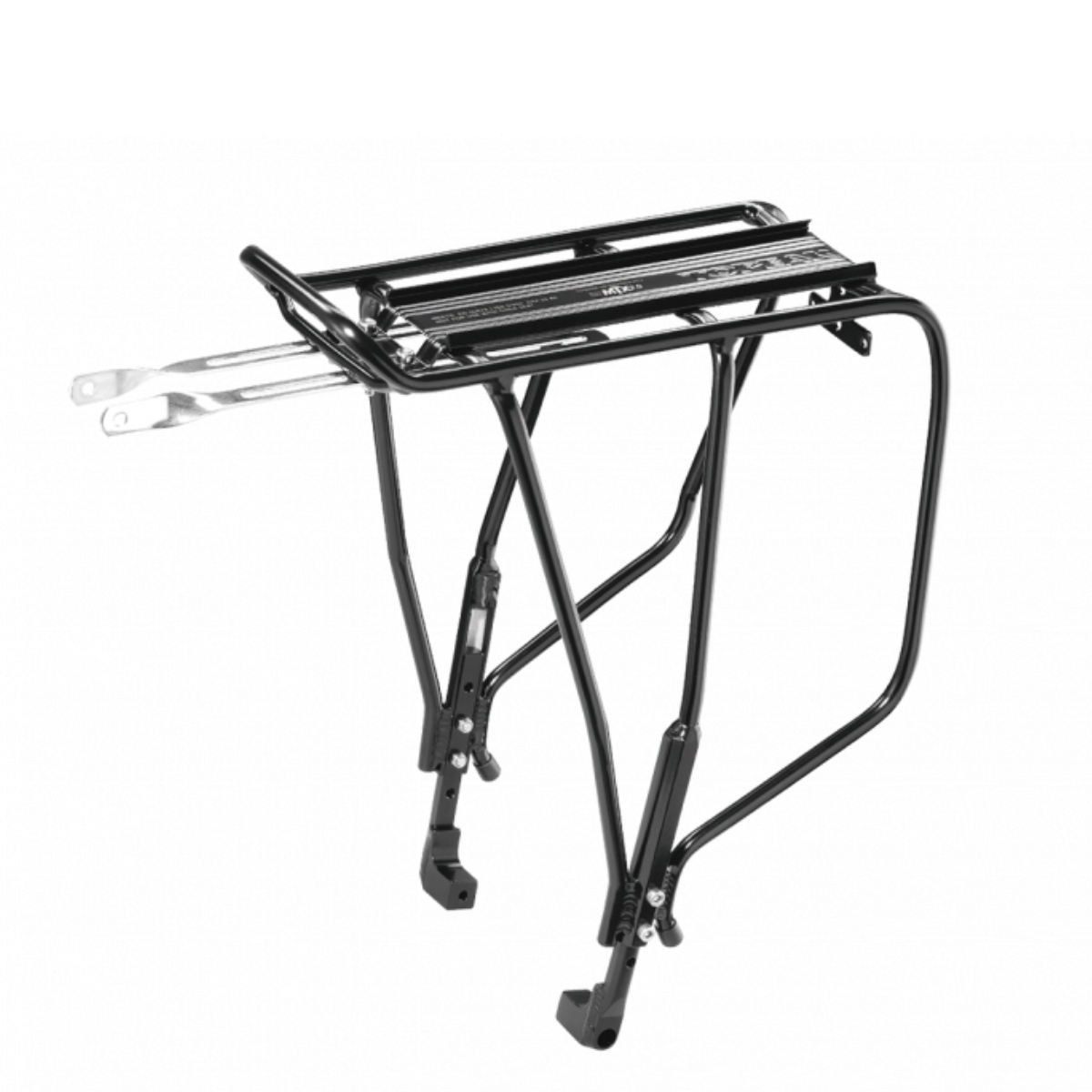
Fitting a wide range of bikes and wheel sizes, the Topeak Uni Super Tourist is well-made, durable and competitively priced - what's not to like? It is also compatible with Topeak's quick-track range of accessories.
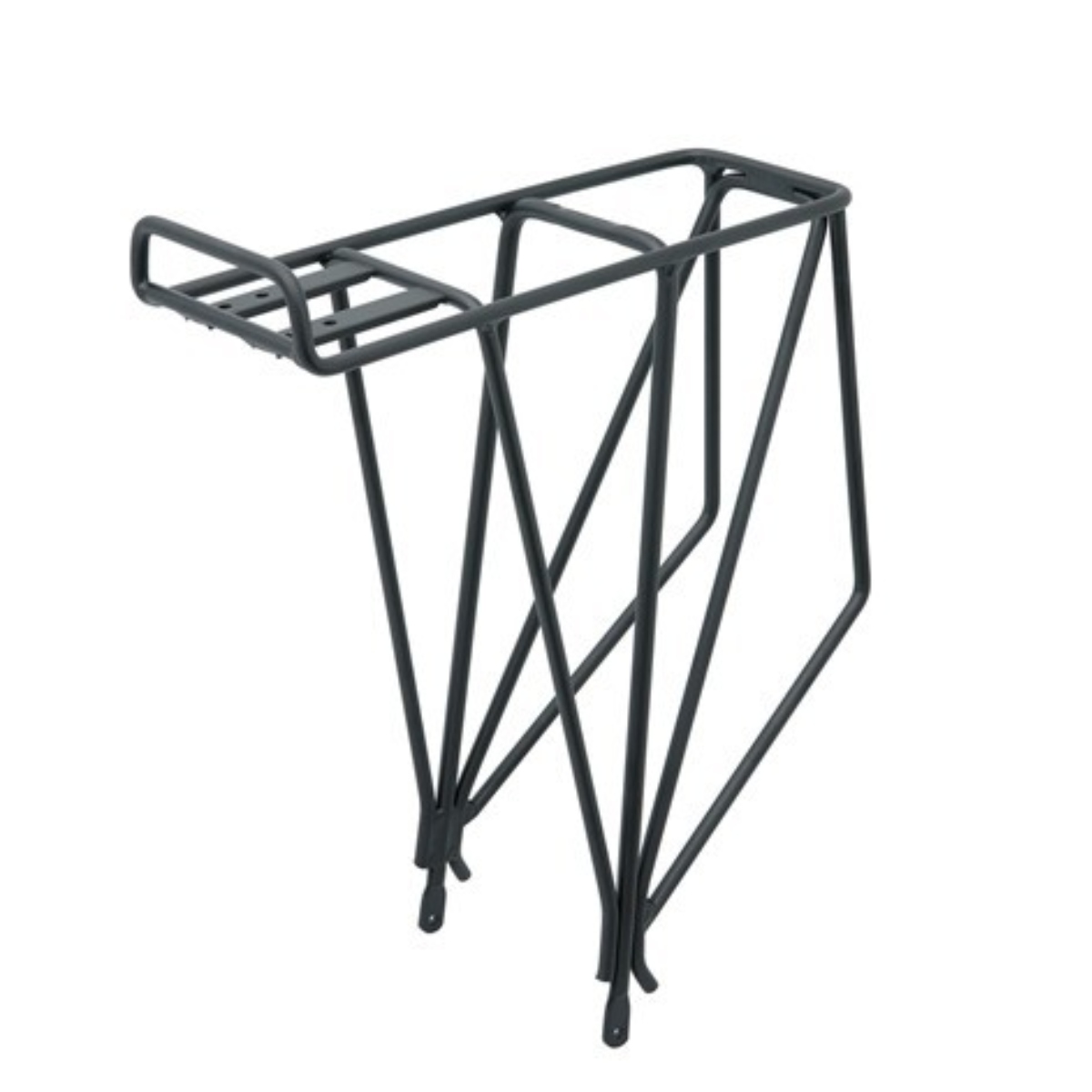
While compatibility is limited with modern thru-axle bikes, millions of bikes with quick-release axles still exist. The Blackburn Expedition rack is fantastically stable and easy to install, though.
Load the next 3 models
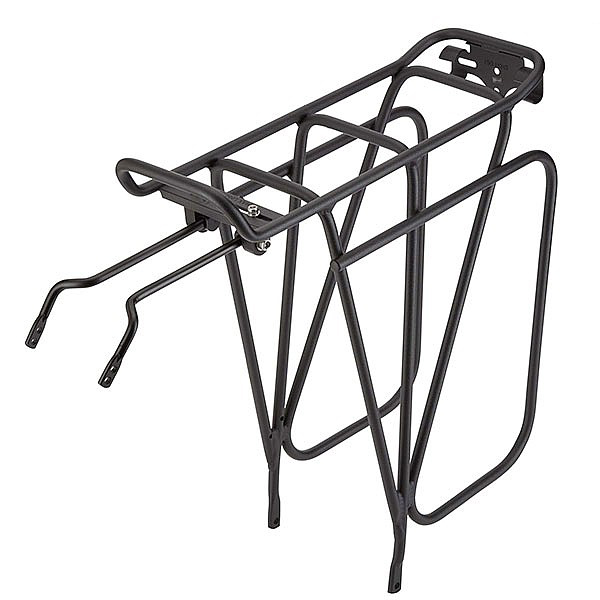
With a whopping 35kg overall load capacity, the Tortec Expedition has one of the highest weight capacities on the market. It's ideal for mounting child seats, doing the weekly shop, or picking up some DIY supplies, and it's very affordable.
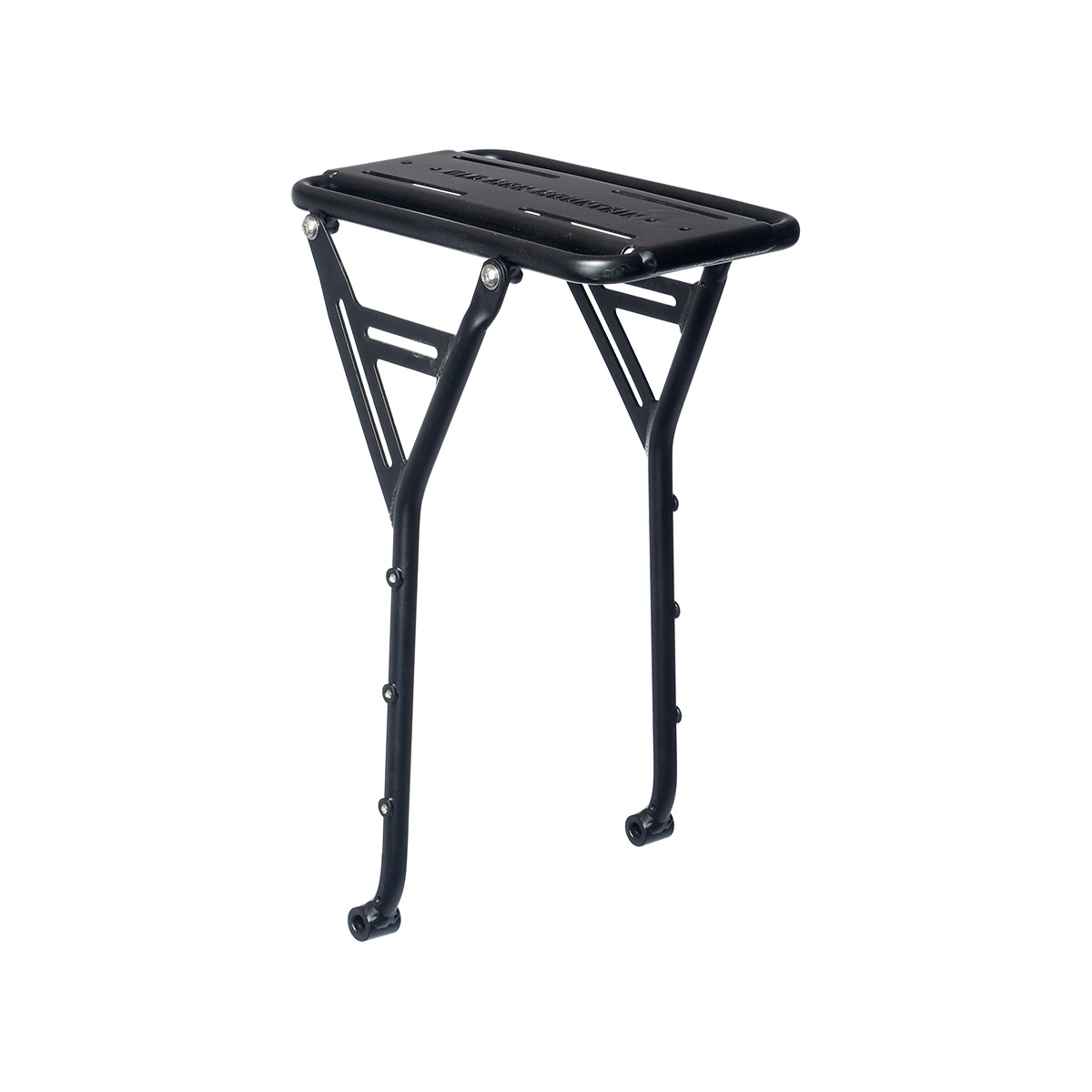
The Old Man Mountain Rack Elkhorn is the perfect platform for just about anything you need to carry. It can be used on multiple wheel sizes and either on the front or rear. Its only downside is that it is not compatible with traditional pannier bags.
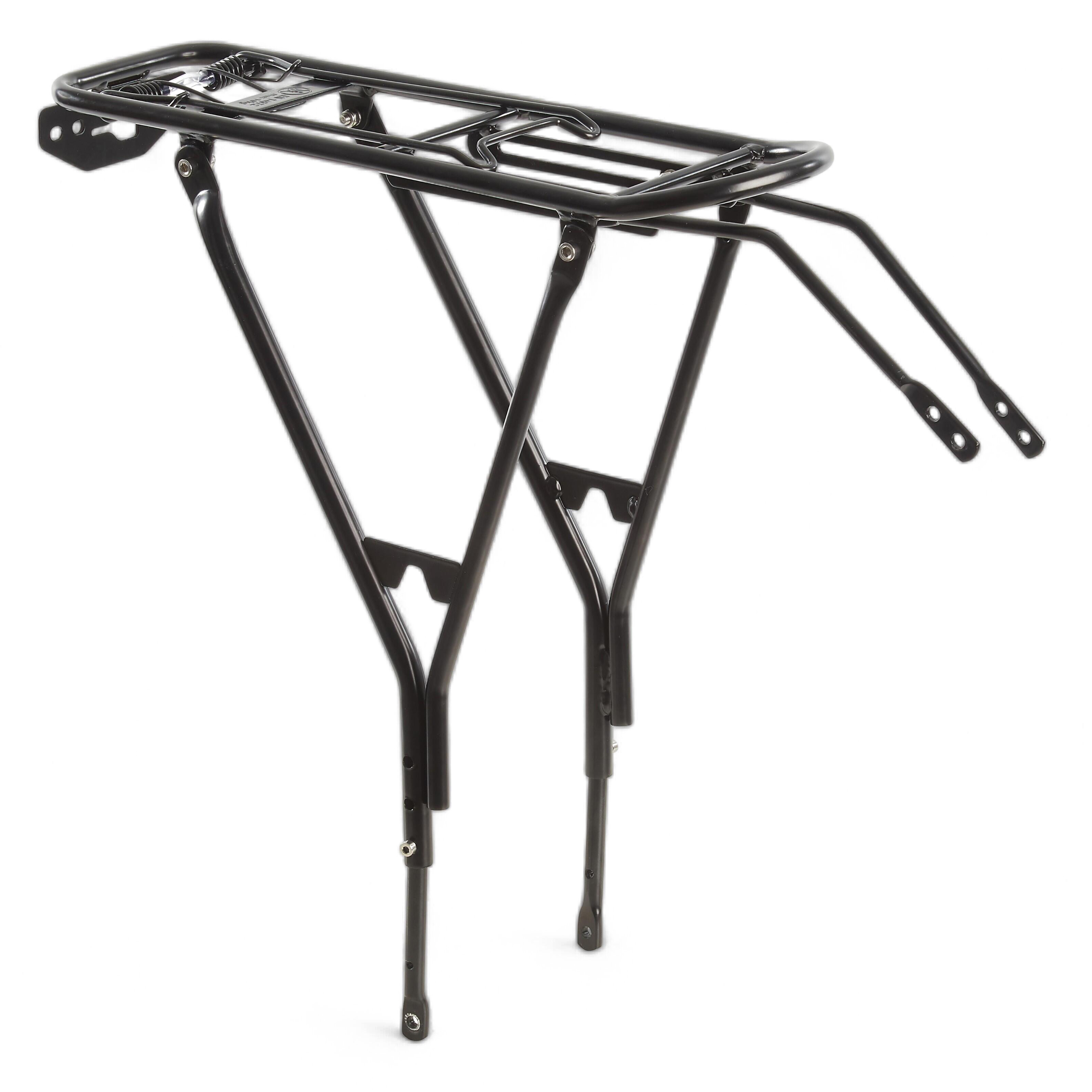
While the Decathlon 100 rack doesn't have the highest quality finish, it is just about the cheapest rack you can buy, and it is compatible with just about any bike that has mounts to bolt a rack.
Best pannier bags
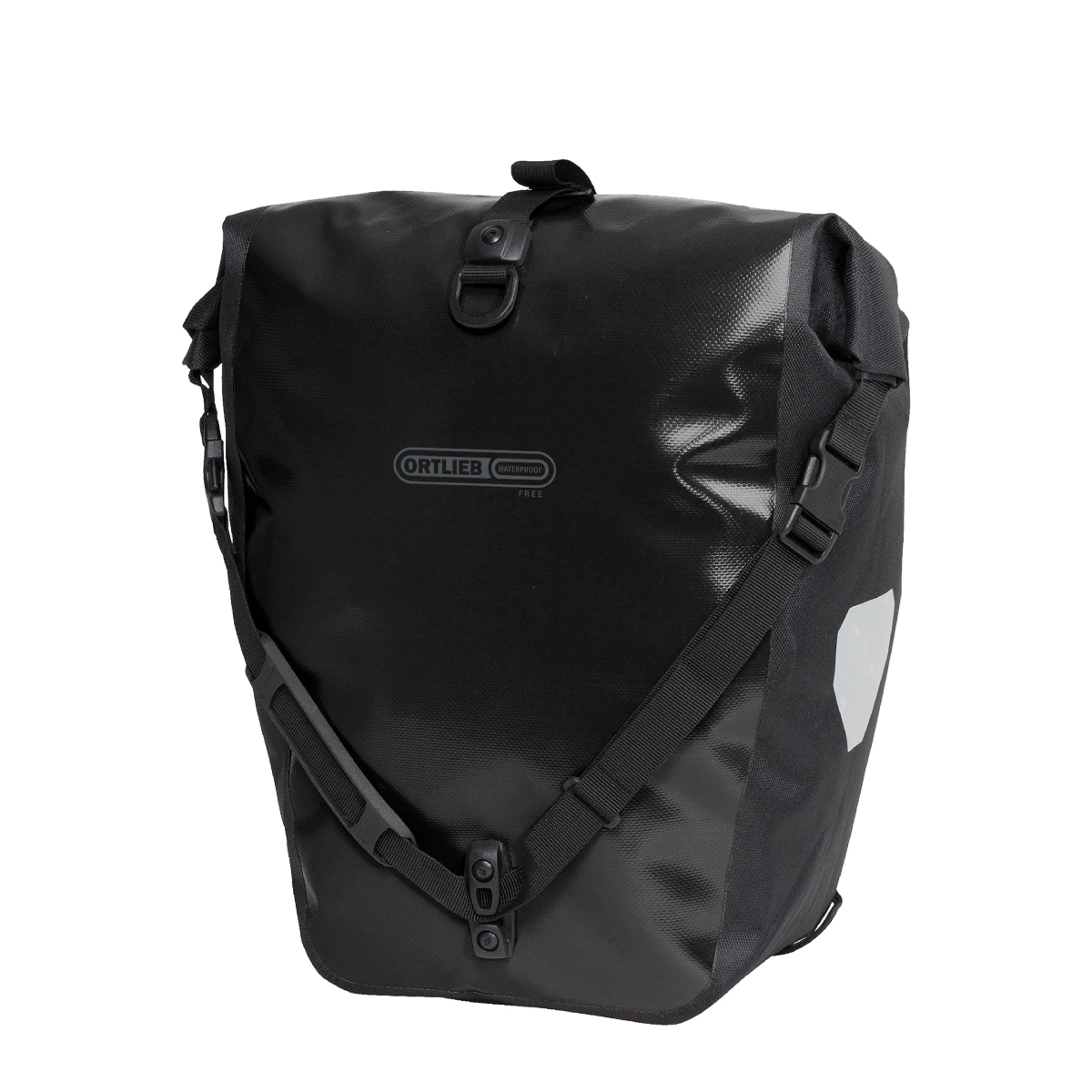
With tool-free adjustment, shoulder straps, and waterproof features, the Back Roller is a spacious bag built to last. The use of a more malleable fabric compared to other Ortlieb bags makes packing significantly easier.
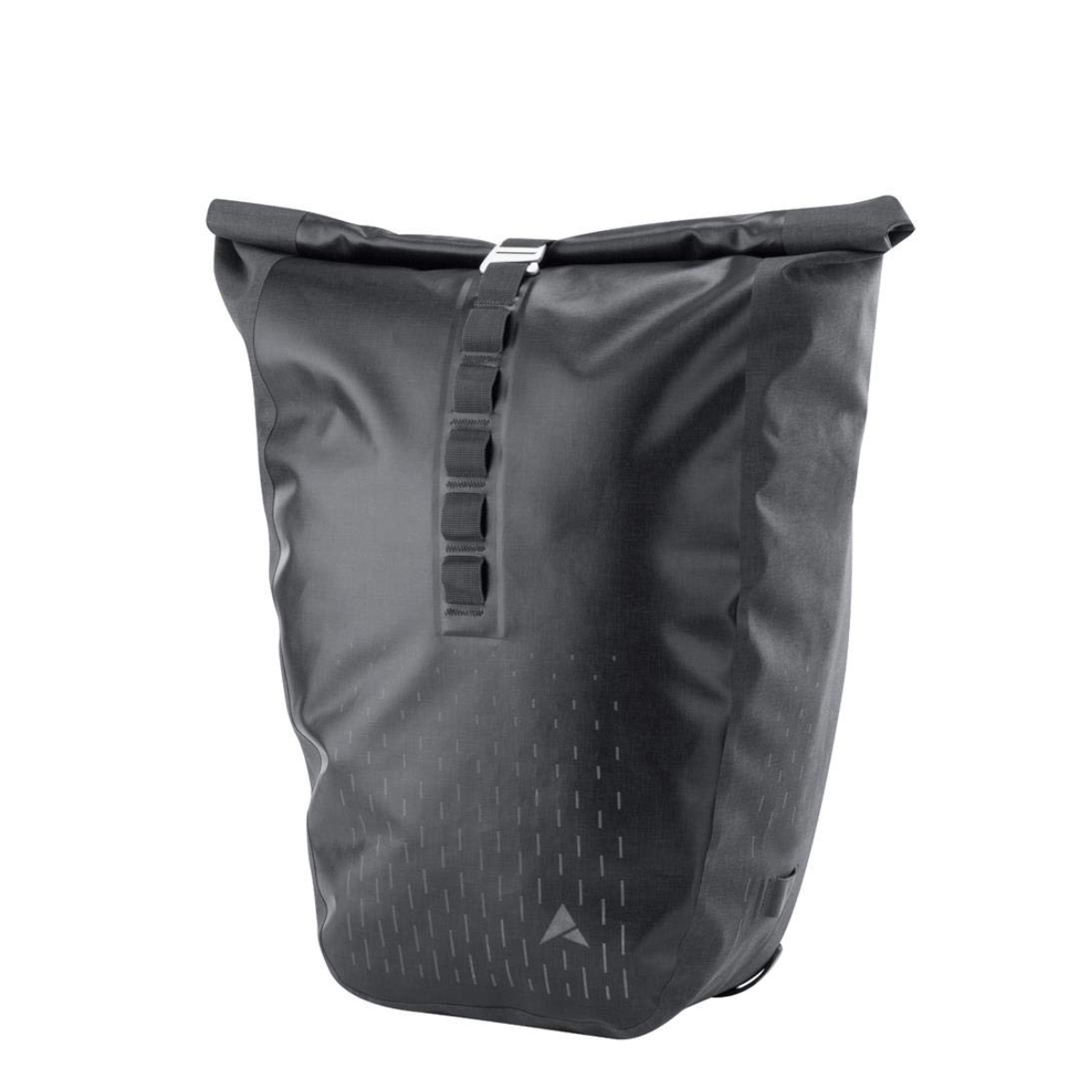
100% waterproof, the Altura Thunderstorm is a well-thought-out pannier. With reflective detailing and internal pouches, however, it's the fast and easy-to-use roll-top closure that really sold me on it.
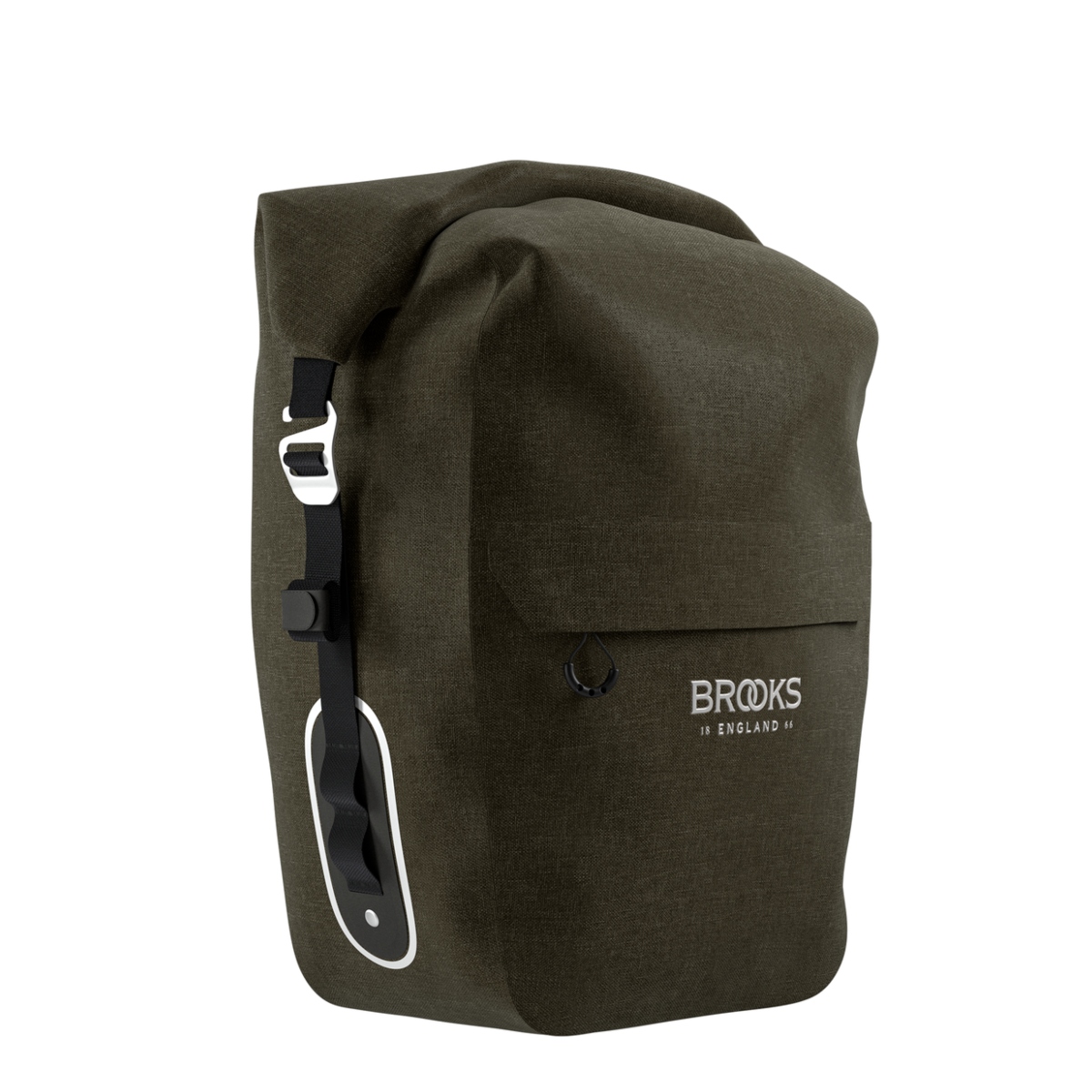
Targeted at adventure riders and bikepackers, the Brooks Scape bags may also be perfect for commuting. Fully waterproof, what will appeal to most is Brooks's reputation for crafting durable products; they could be suitable for some users.
Load the next 3 models
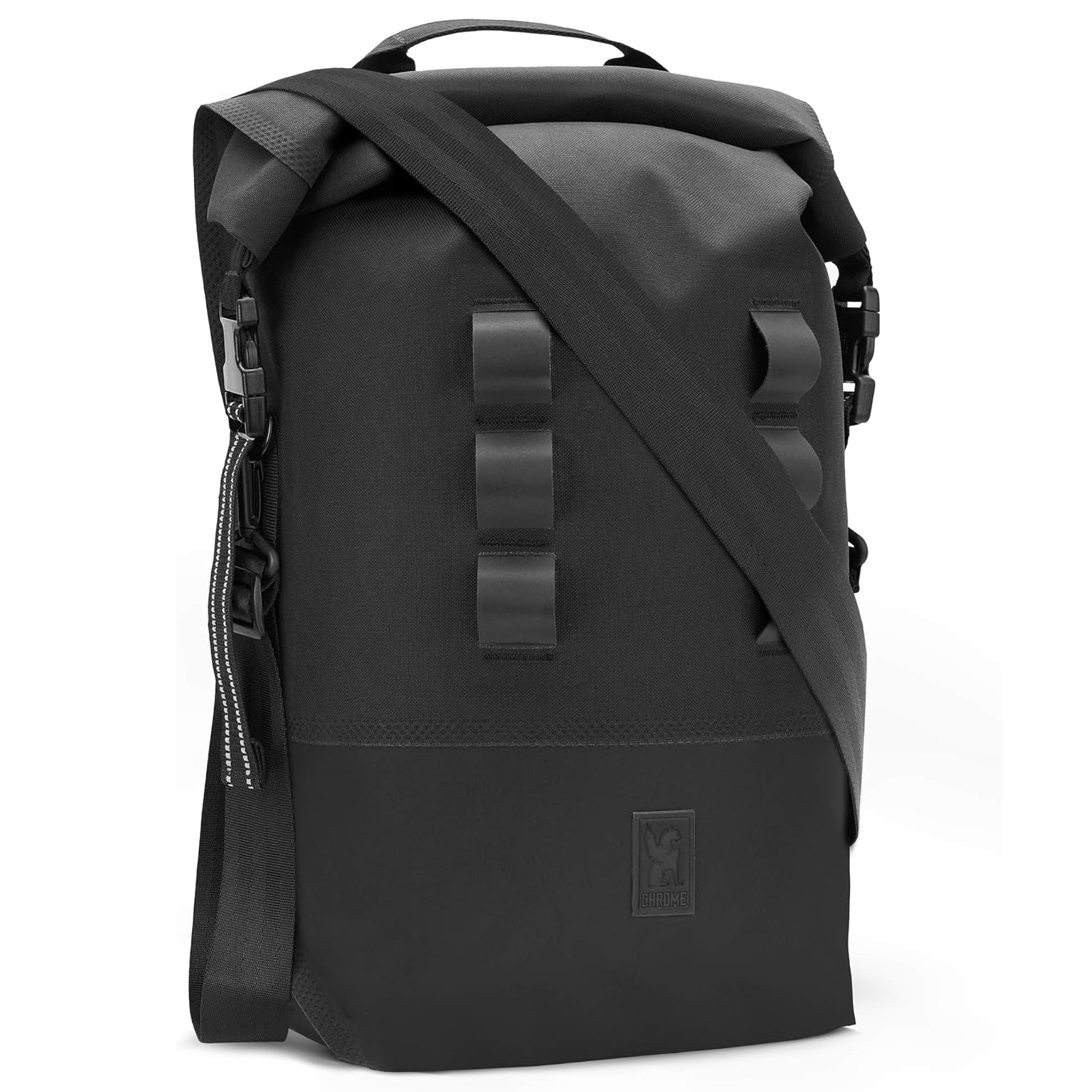
Chrome prides itself on making highly durable cycling kits for urban use; the Urban Ex 2 Pannier is no exception. Its style stands out, which I think is why I was hugely impressed with how well it performed off the bike, too.
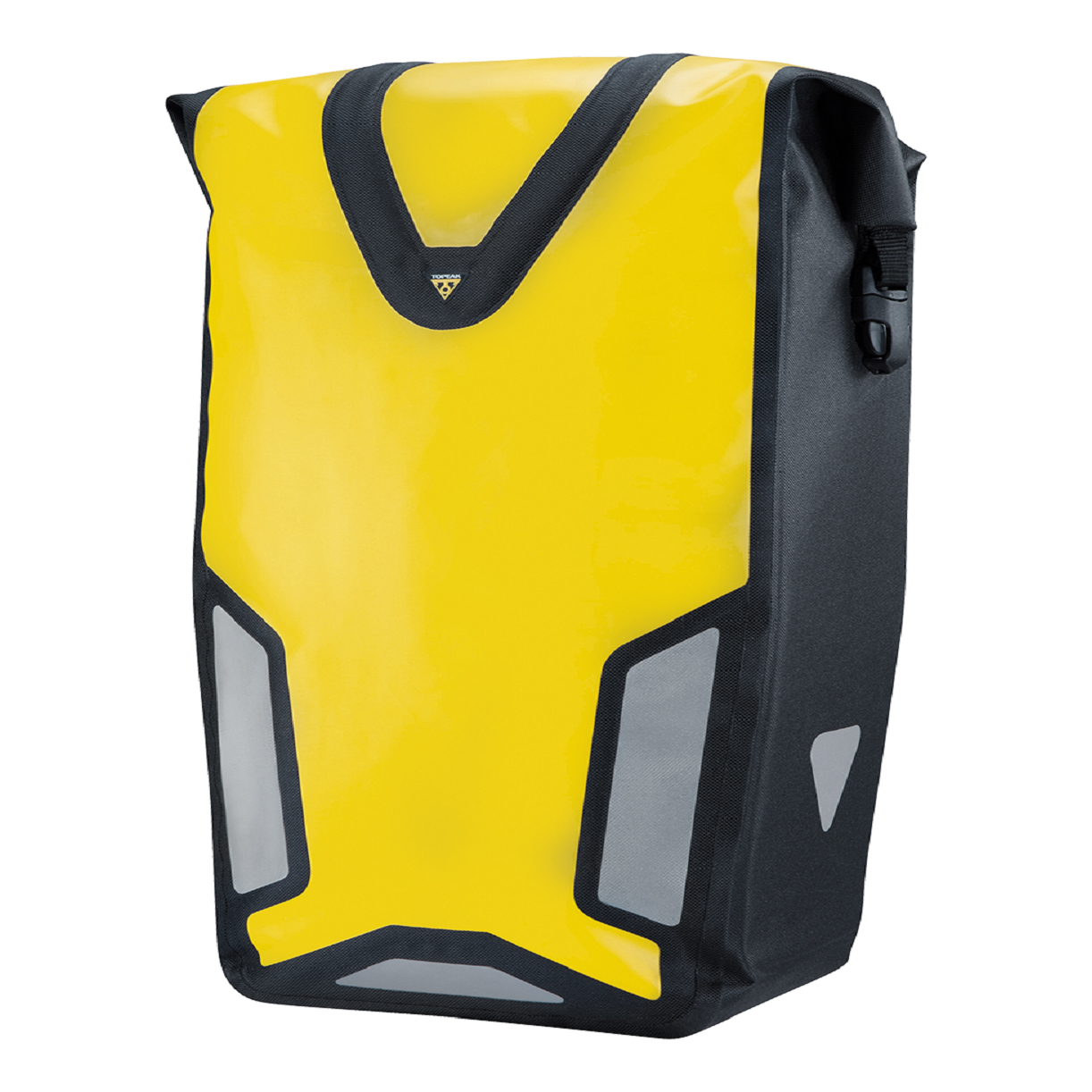
The Topeak Drybag DX is the pannier bag equivalent of a belt-and-braces. Not only is it 100% waterproof, but it also includes additional protection panels and is available in bright colours with plenty of reflectivity.
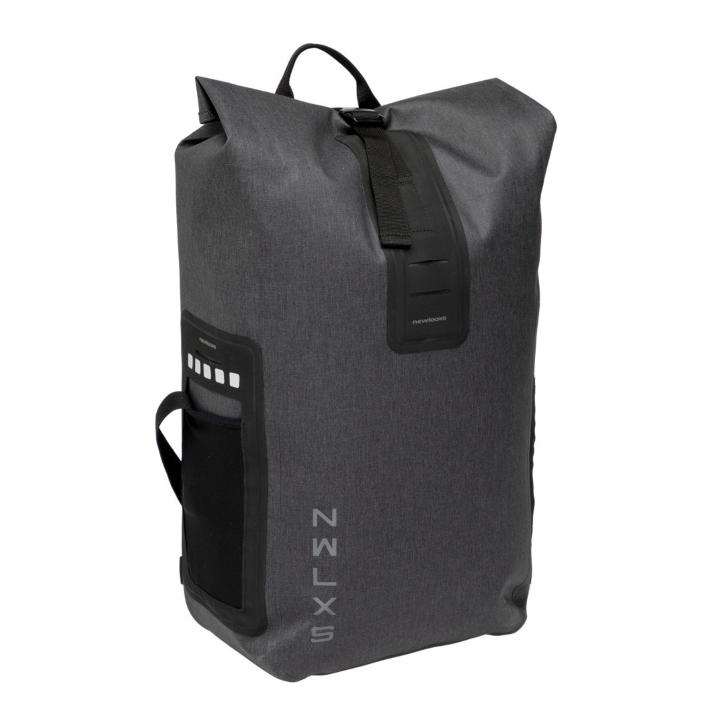
Very nearly the best of both worlds, the New Loox Varo is not only a pannier but can be carried just like a backpack. The only issue I found in testing was putting a wet bag on your back; it's not the nicest feeling.
Best Pannier Racks
Best overall rack
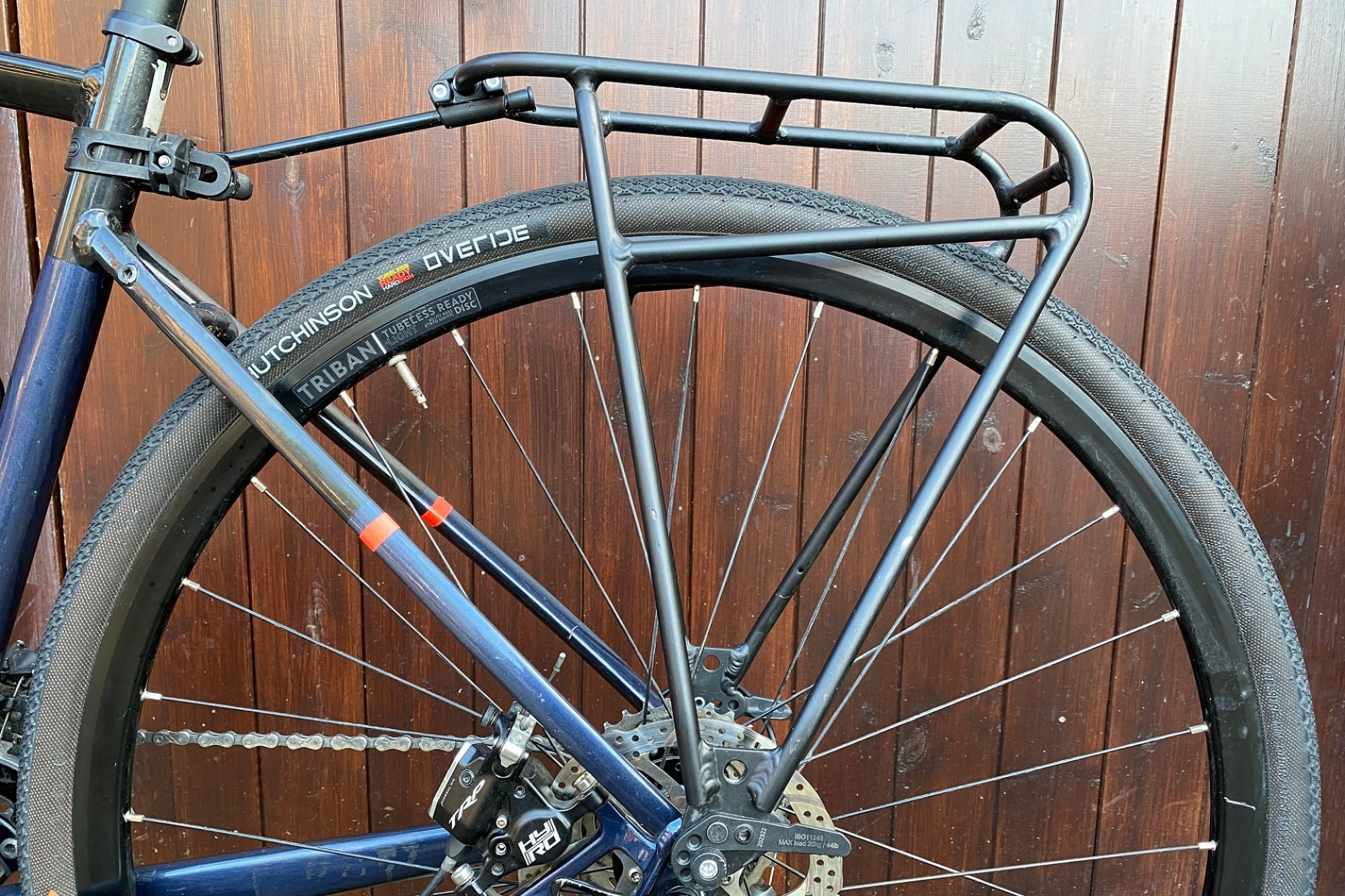
1. Ortlieb Quick Rack
Our expert review:
Specifications
Reasons to buy
Reasons to avoid
Ortlieb's Quick Rack is a revelation where racks are concerned. Not only is the initial installation exceptionally simple, it can be removed, or remounted, in less than 20 seconds.
It's suitable for 26” and 28” (limited suitability for 29” wheels – up to max. 2.35” tyre width). Extra accessories include mudguards and adaptors for bikes that don't have eyelets.
If you only have one bike the Quick Rack enables you to quickly transform it from a road warrior to a tourer, commuter or shopper at the drop of a hat. This makes transportation a breeze too. The hooks that remain on the bike when the rack is removed are hardly noticeable.
With two hanging levels, it comfortably accommodates panniers and a rack bag at the same time without one interfering with the other.
The rack looks tidy on the bike and is well-made, encouragingly it comes with Ortlieb's 5 year warranty. While it might be more expensive than the likes of Blackburn and Topeak, our tester deemed its convenience and versatility well-worth the extra expense.
Read more: Ortlieb Quick Rack review
Best for compatibility
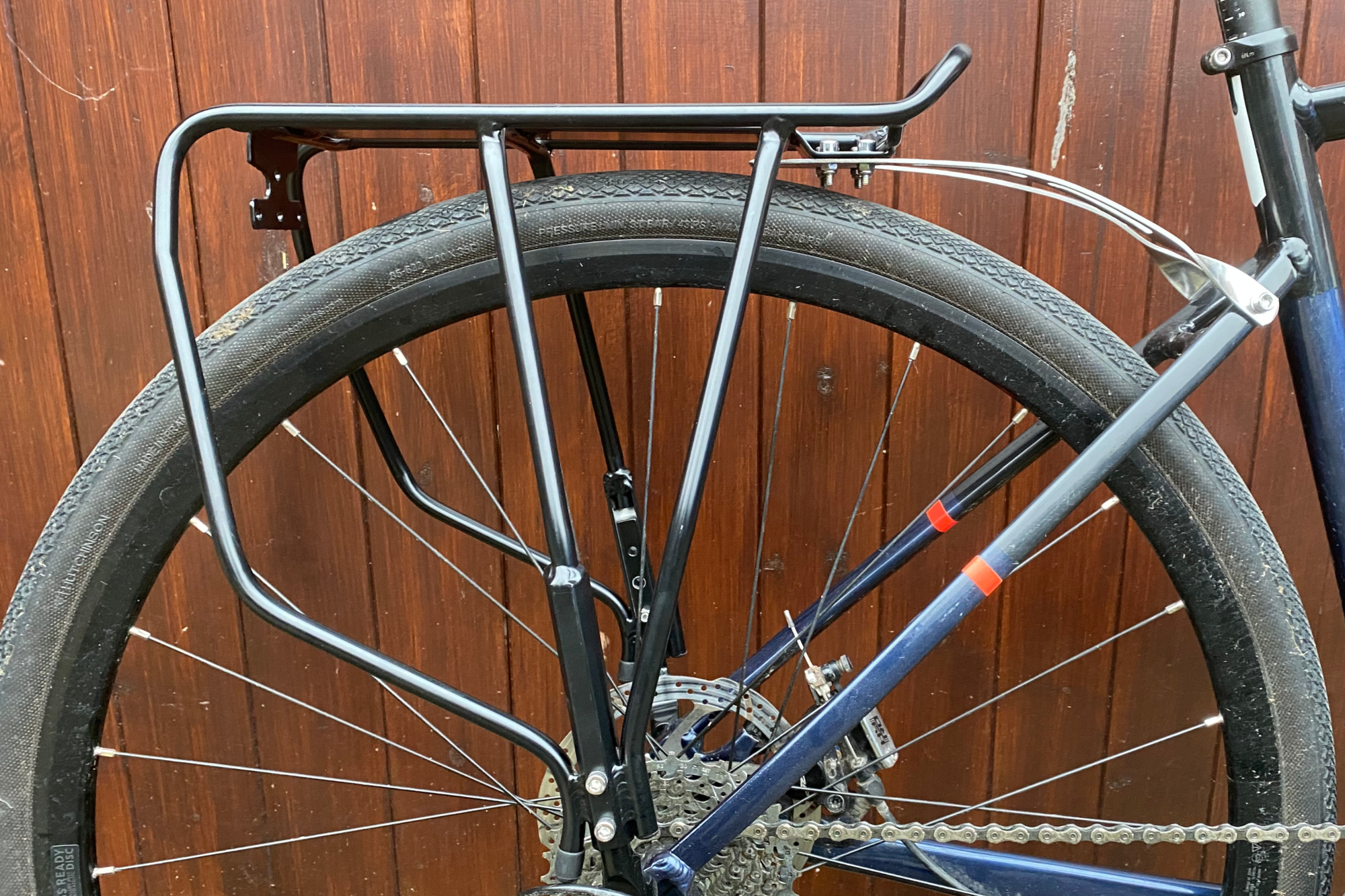
Specifications
Reasons to buy
Reasons to avoid
Topeak's Uni Super Tourist is an aluminium bike rack with stainless steel fittings. It's designed to 'fit most 24” to 29” wheel MTB and 700C touring bikes with disc brakes'. Out of the racks we tested, this one came out on top where compatibility was concerned; it fitted all the bikes that we tried it on.
The quality of construction and finishing is impressive. Unlike both LifeLine's and Decathlon's, the finish remained unmarked despite plenty of bike panniers being used on it.
With an RRP of $68.99 / £44.99, we'd say that this is definitely a value-for-money rack that should stand the test of time.
The maximum load of 26kg makes the bike rack ideal for anyone reliant on their bike for heavy shopping loads, keen tourers or those wanting a sleek system to carry a trunk bag; it features an MTX QuickTrack® plate which is compatible with any Topeak MTX TrunkBag or MTX rear basket.
Read more: Topeak Uni Super Tourist Rack review
Best for ease of installation
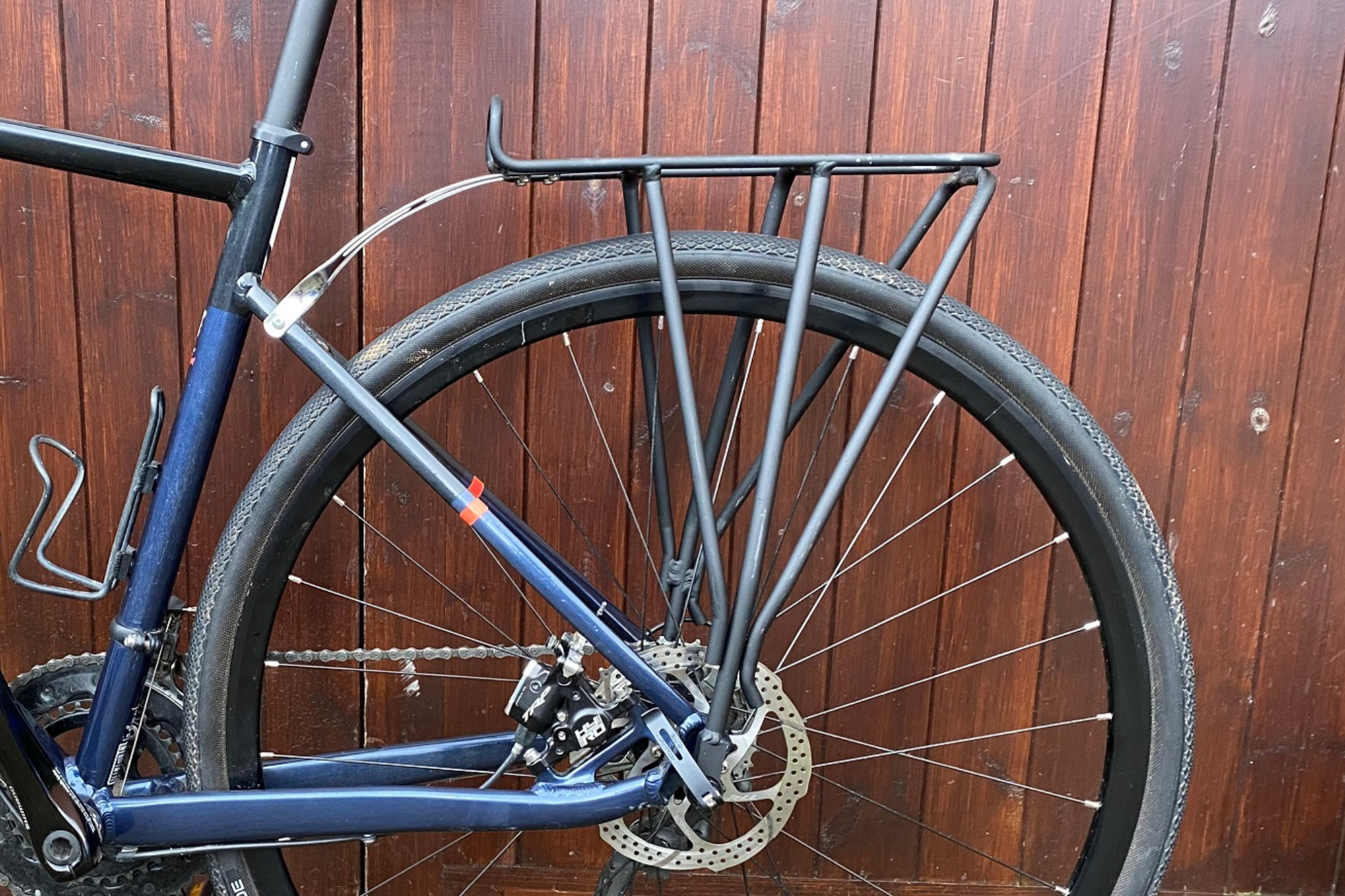
Specifications
Reasons to buy
Reasons to avoid
The Expedition 1 Rear Rack is Blackburn's legacy product. Designed by Jim Blackburn in 1975, it's made from aircraft-grade aluminium, specifically for 700c or 29er wheels, but should suit most bike wheel sizes with 9mm QR axles. As the name suggests, this is a disc brake compatible bike rack, but there is also a standard rim brake version too.
It's hard not to love the simple mounting that the supplied quick-release skewer offers. It means that you can fit the rack to a bike that doesn't have mounting eyelets. Two different sizes of P-clips are also included for attaching the arms to the frame. If you swap bikes and have mounting points, it can be directly mounted to the frame too.
This is certainly a bike rack to invest in if you have a disc-brake bike and are reluctant to fettle with a rack that claims to 'fit-all'. The Expedition 1 will likely fit the vast majority of QR, disc-brake bikes with 700C wheels.
In addition to its simple mounting and reliability, it's well-made and comes with a lifetime warranty.
Read more: Blackburn Expedition 1 bike rack review
Best for heavy loads
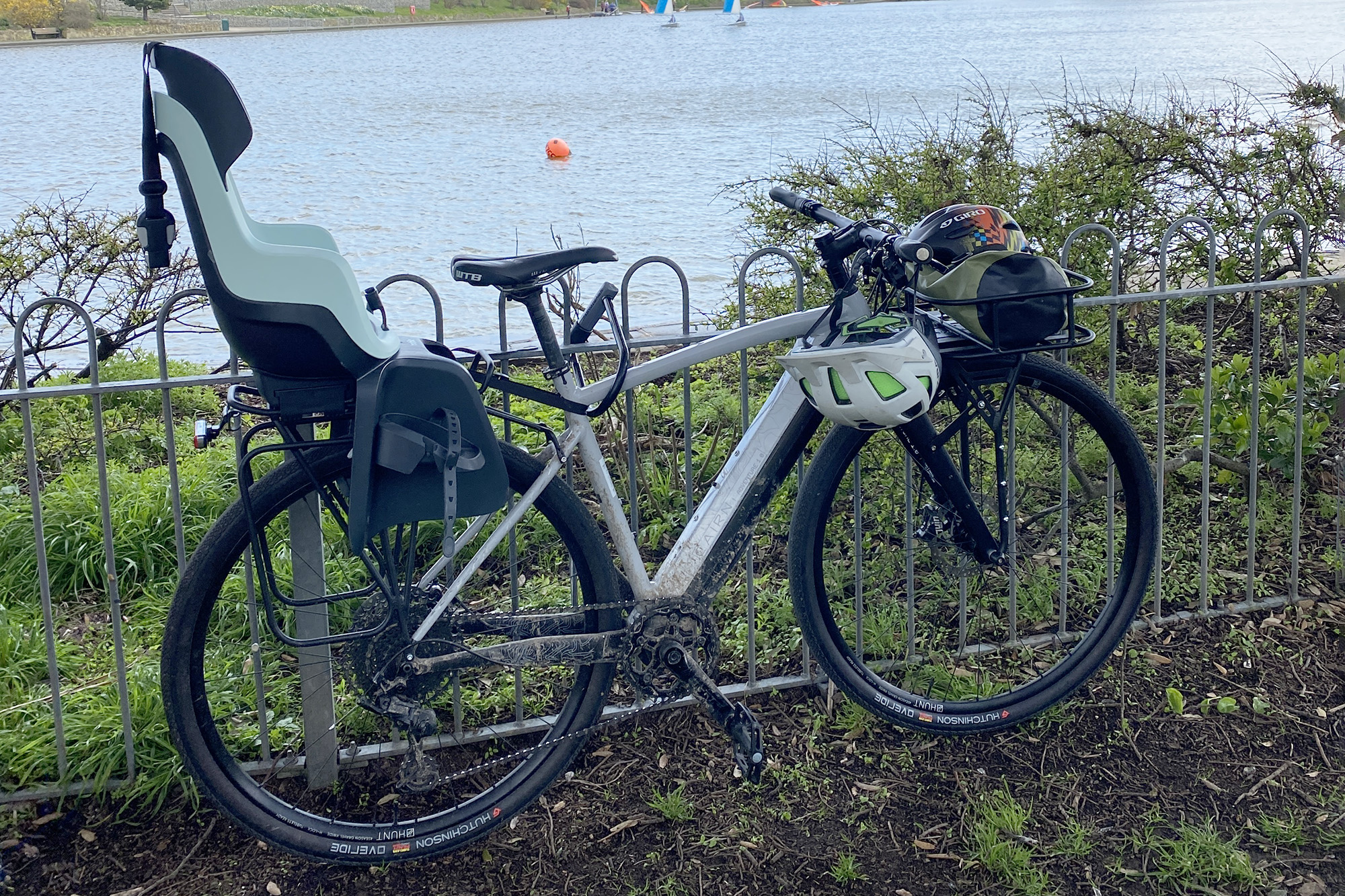
The Tortec is a very stable platform for a children seat
4. Tortec Expedition
Our expert review:
Specifications
Reasons to buy
Reasons to avoid
When I discovered the Tortec Expedition, I was a bit shocked to find a rack capable of such a high load rating at such an affordable price. I never intended to seek out something on a budget, but it was a happy coincidence. I just knew that with my son keen to come out on the bike and my ever-increasing use of the bike to run errands and the weekly shop, I wanted something durable and something I didn't have to worry about overloading.
I have had the Expedition rack for four years now, and it has been fairly flawless. It has mostly been used to ferry my son around until he spotted a Kids' Ride Shotgun seat. He no longer wanted to sit in the back; he wanted to sit up front. During these duties, it has carried probably no more than 10-12kg or 25- 26 lbs, but given how high my son sits, it remains stable and is not affected by the extra leverage.
It's not perfect thats for sure, it weights nearly a kilo/2.2lbs on its own, which is why I really only use it on my ebike. Given that you are carrying anywhere near its 35kg/77lbs capacity, an extra kilo isn't going to make much difference. My biggest annoyance, though, is the additional rack support. I have run several different panniers on the Tortec, and during that time, I have struggled with all of them, which isn't helped by the slightly chunky 10mm tubing used.
All in all, the Tortec Expedition is excellent value and a solid, stable platform for carrying pretty much anything on your bike.
Best for versatility
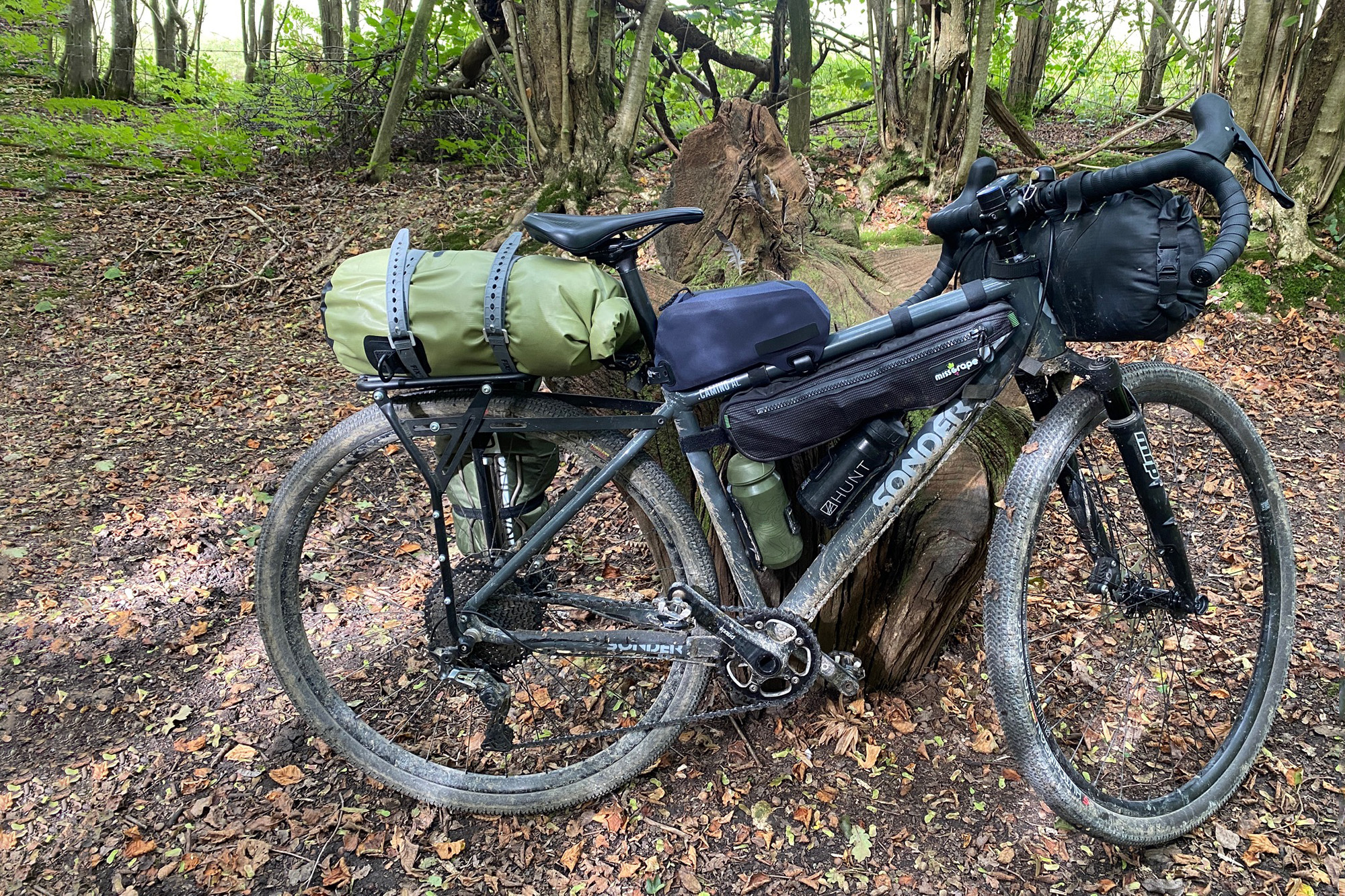
Mostly a platform for you to strap whatever you want to it
5. Old Man Mountain Elkhorn
Our expert review:
Specifications
Reasons to buy
Reasons to avoid
At first, I was slightly overwhelmed by the Old Man Mountain Elkhorn. If you have got past selecting the right fitting kit for your bike, especially if you wish to run it on multiple bikes front and rear, the amount of bits it comes with disassembled almost got me to give up before I even started.
However, I overcame that hurdle and am so glad I did. The OMM has been exactly what I was after. I liked the idea of the Tailfin Ecosystem but didn't like that it was an ecosystem and the cost associated with it. I use my bikes for too many different reasons to be tied down to a single system, regardless of how comprehensive the Tailfin system has come to be. In reality, I already owned a lot of useful things, like cargo cages, dry bags, and tons of straps, so I was drawn to the fact that the Elkhorn became a platform for me to use all the stuff I already owned. If you don't, then the Tailfin system is certainly very popular, and many friends have recommended it to me.
That said, the OMM has barely spent any time off my bike in the last three years. I run it both on the front, with a basket for additional shopping space, mainly for soft, bulky items like bread, and on the rear, for bikepacking duties. I combine it with dry bags strapped to cargo cages and usually my tent or sleeping kit on top.
The Elkhorn is almost ridiculously over-engineered, considering its relatively low load rating of 25lbs/11.4kg. Thats okay, as it is extremely stable even nearing the load limit, and I quite like its industrial style. What I really love is just how much lower it keeps the weight on the bike versus a traditional pannier setup.
Best budget
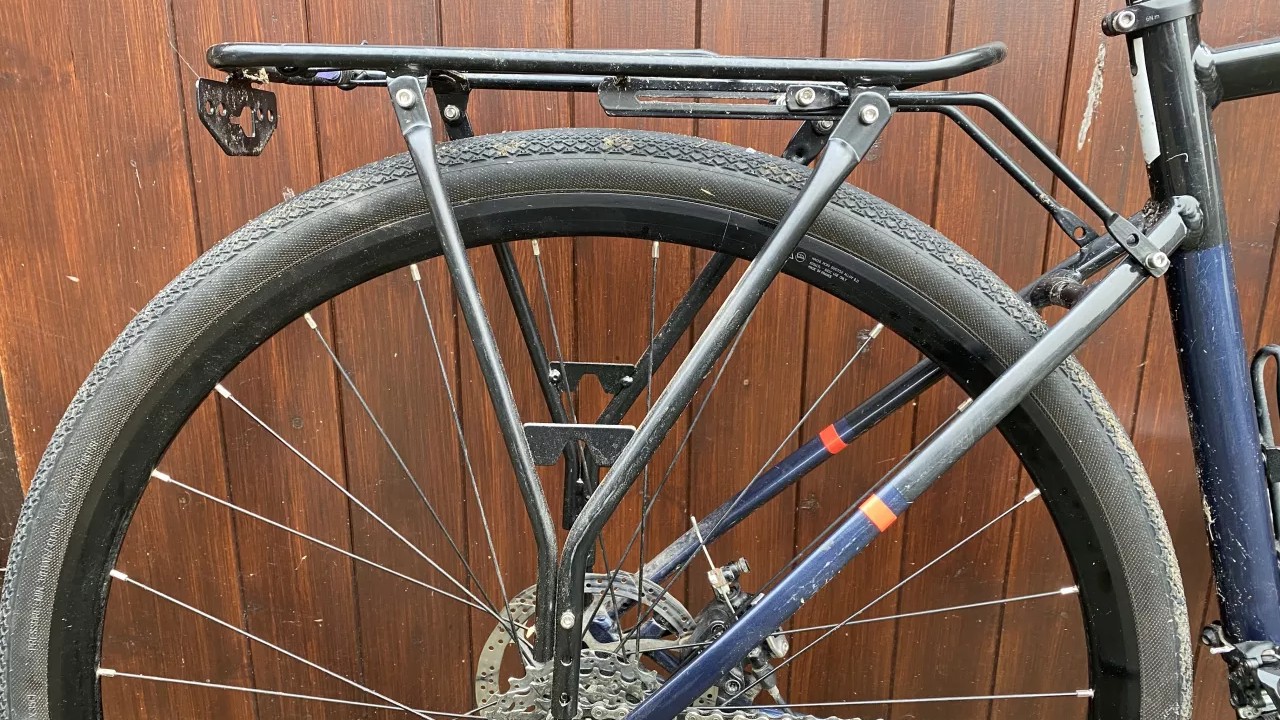
Specifications
Reasons to buy
Reasons to avoid
The Decathlon ELOPS 100 bike rack is probably the cheapest option on the market. But just like LifeLine's bike rack, affordability doesn't always deliver compatibility, or quality.
The rack is a combination of aluminium and steel with a rather delicate finish. It would be advisable to use some insulating tape at pannier contact points if you want to prolong the aesthetical appearance of the rack.
The biggest drawback of this bike rack is its flatpack status. You'll need to be a little patient and happy to fettle if you are going to mount it yourself. On the plus side, all the tools you need are supplied.
We found compatibility to be on a par with the LifeLine Alloy Rack; it certainly doesn't fit 'all 24" to 28" bikes with frames equipped with inserts'.
The 10kg weight limit makes this a good choice for anyone wanting to carry light loads.
Read more: Decathlon ELOPS 100 Bike Pannier Rack review
Best pannier bags
Once you've got your rack sorted, it's time to choose a pannier, or two, to attach to it.
When comparing prices, be sure to check whether you are getting a pair or a single pannier; many manufacturers sell single panniers, while others only sell pairs.
Best overall bag
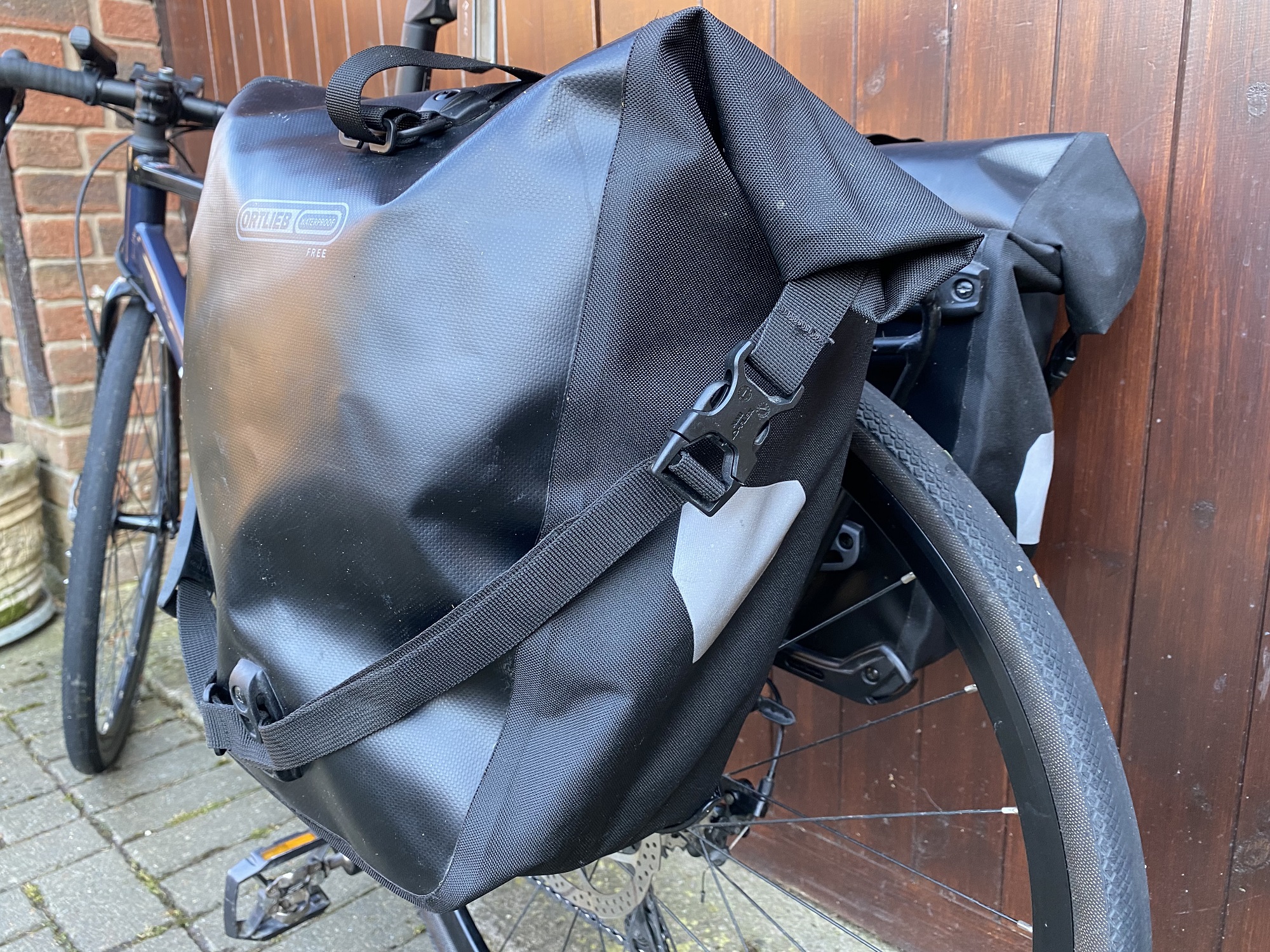
Specifications
Reasons to buy
Reasons to avoid
Ortlieb's Back Roller panniers are the choice of tourers worldwide for good reasons. The Back Roller Free boasts every feature that the long-standing Classic features: the Quick-Lock2.1 system that attaches to any pannier, tool-free adjustment, interior pouches, shoulder straps and an IP64 rating. So what's different? The latest Back Roller comes from Ortlieb's PVC-free line of products and is made of a polyurethane-coated polyester fabric.
Our tester felt that the fabric was slightly more malleable than that used on the Classic, and perhaps more vulnerable to abrasions. However, the overall performance was impressive and certainly wasn't affected by any scuffs. Indeed, the more malleable material made packing out the pannier easier.
LIke many of Ortlieb's products, these are built to last and also come with a 5 year warranty. This makes the initial $210 / £140 for a pair investment perfectly palatable.
Read more: Ortlieb Back Roller Free pannier review
Best for wet weather
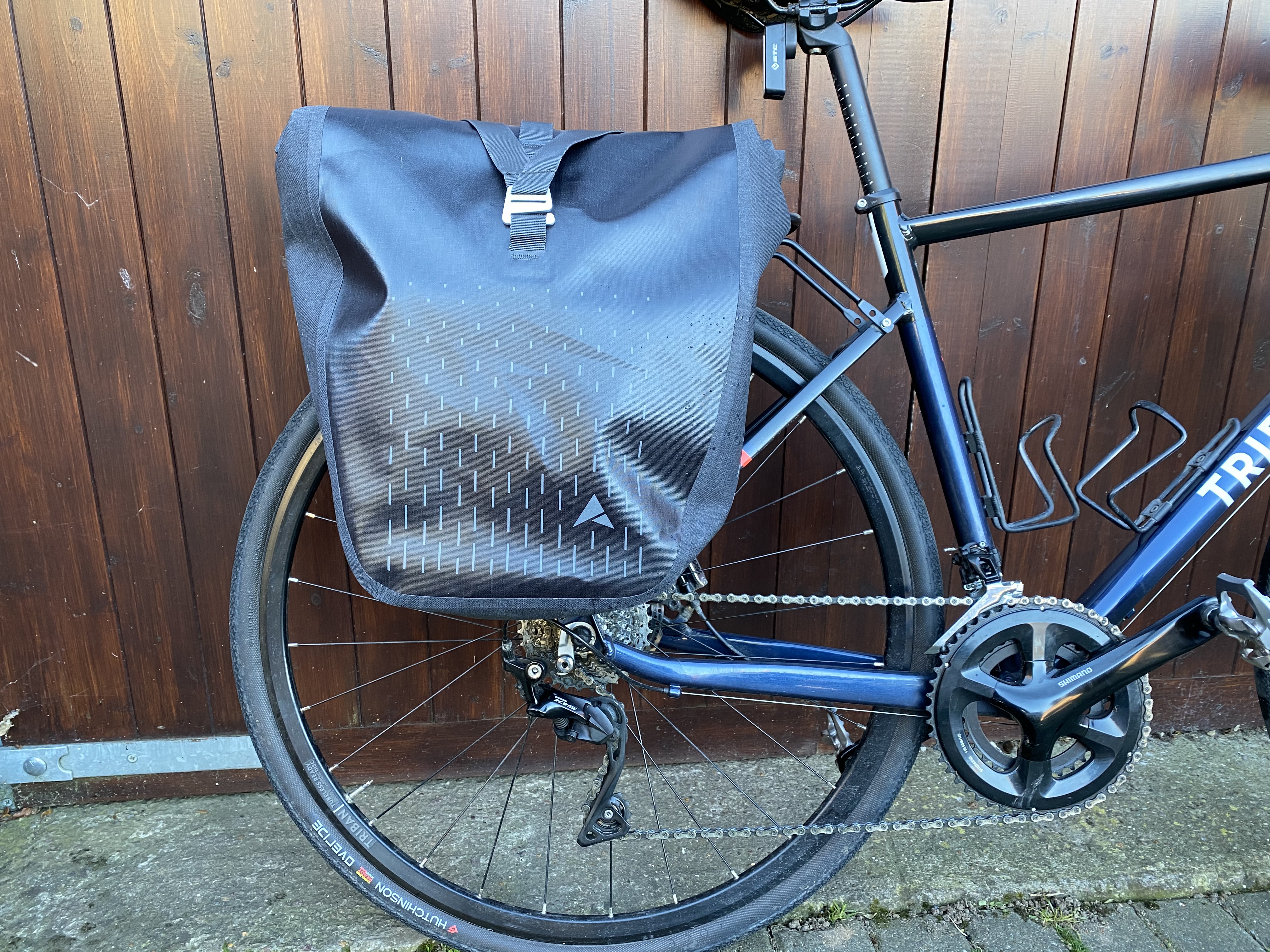
Specifications
Reasons to buy
Reasons to avoid
Altura is known for making practical kit that stands out at night; the Thunderstorm City Pannier is no exception. Its quality impressed hugely, rivalling other manufacturers for construction and waterproofing.
The roll-top closure with a single clasp is really easy to use, making the pannier ideal for anyone wanting regular, quick access to the pannier.
Reflective detailing is very good; those undertaking dark commutes will stand out in traffic.
Inside, there are two ‘open’ pouches and a zipped one, plus a key loop, while light padding protects anything in the pouches.
There's a single carry handle that is comfortable enough, though quite small. There's no supplied shoulder strap.
Given its durable, robust nature, the Thunderstorm City 20 shouldn't be confined to commuting duties; it would make for a decent touring pannier too, providing you are not trying to be too stealth.
Read more: Altura Thunderstorm City 20 Pannier review
Best for versatility
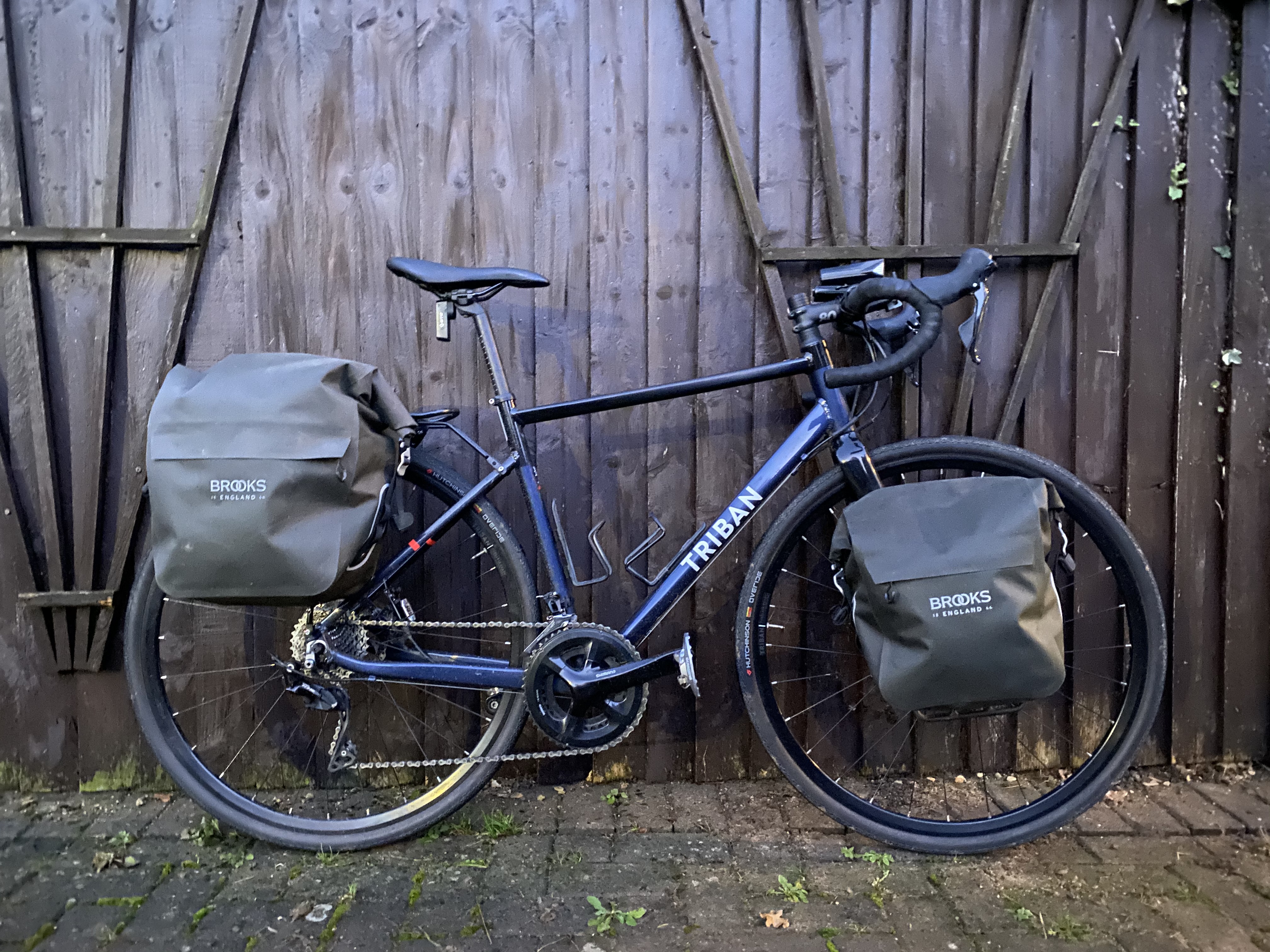
Specifications
Reasons to buy
Reasons to avoid
Brooks' Scape range features a small and a large pannier. They tick the usual boxes that you would expect from Brooks: well-made, stylish and durable.
While the range is primarily targeted at adventure riders, the Scape Panniers won't be out of place on a commuting bike, or on the rack of someone simply doing errands.
There are no interior pockets but a sizeable, watertight exterior one goes some way to make up for this; it's a functional addition that many 100% waterproof panniers don't boast.
The carry handle is not designed for comfort; it's not much more than a piece of cord. There's no supplied shoulder strap, something to bear in mind if you considering investing.
The aesthetics are certainly subtle and stylish, with just a very small amount of reflective detailing on the sides.
These may be versatile but some commuters might consider the lack of carrying options and minimal reflectives a sticking point.
Read more: Brooks Scape pannier review
Best for urban riding
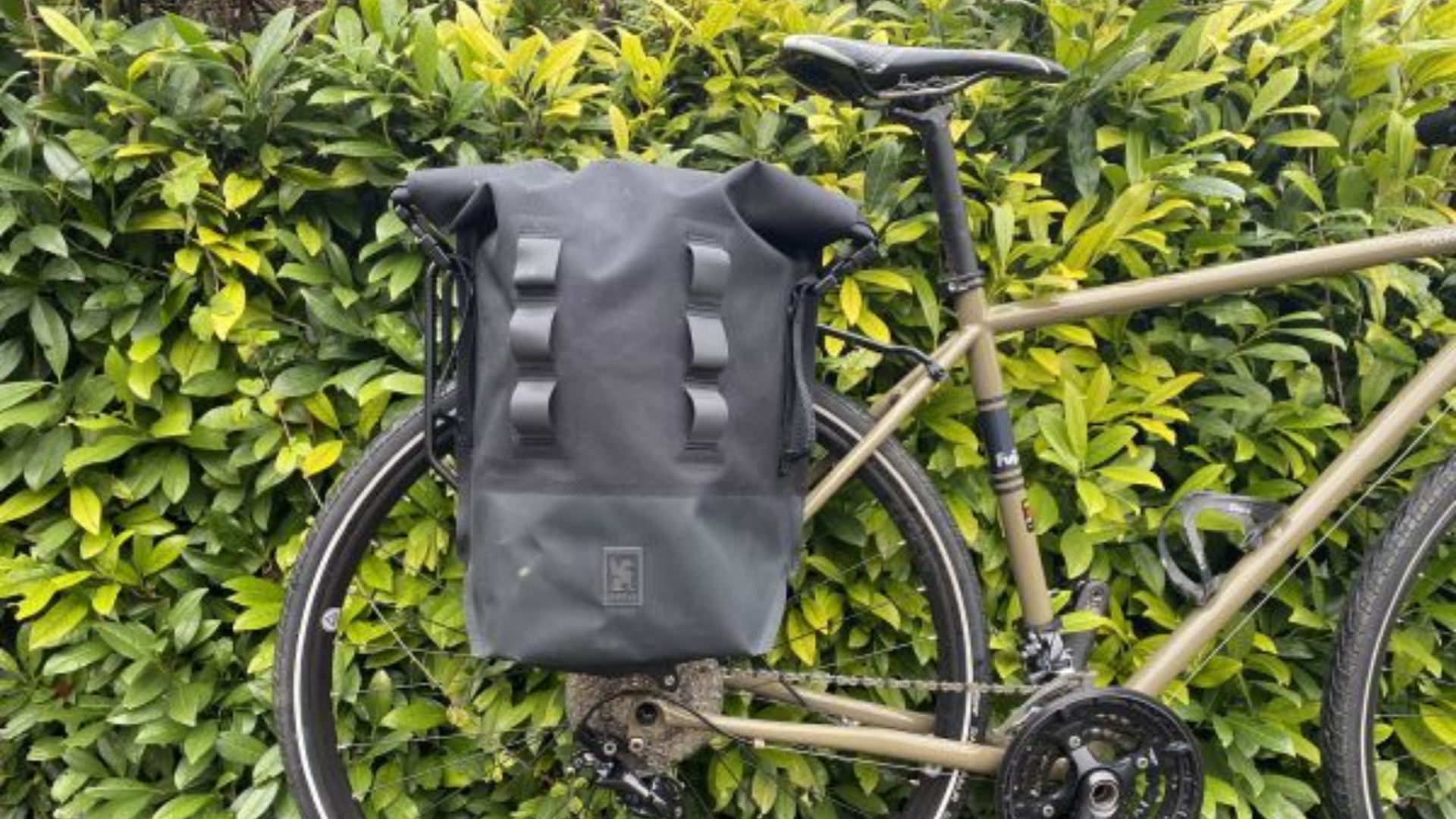
Specifications
Reasons to buy
Reasons to avoid
Chrome prides itself on made-to-last kit for urban cyclists; the Urban Ex 2 Pannier is typical of the quality, robustness and style that it offers.
It's not as spacious as some, so be sure it offers the room you want before investing. Interior pockets and pouches offer excellent protection for electronic devices; a compact office is possible there. On the outside, there is daisy chain webbing to attach a D-lock to.
While we didn't find an official IPX rating on the website, we can confirm that it didn't let a droplet of water get to contents while we were testing; waterproofing is as good as the best.
Carrying options impressed hugely; two different options for carrying by hand, plus a robust, detachable shoulder strap. It's designed to be carried just as comfortably and conveniently off the bike as it is on it. These practical options, in our opinion, make the pannier one of the best for urban, office-based commuters.
The price is eye-watering, but with a lifetime warranty this is a buy-once-buy-to-last option for any discerning urban rider.
Read more: Chrome Industries Urban Ex Pannier 2.0 review
Best for protection
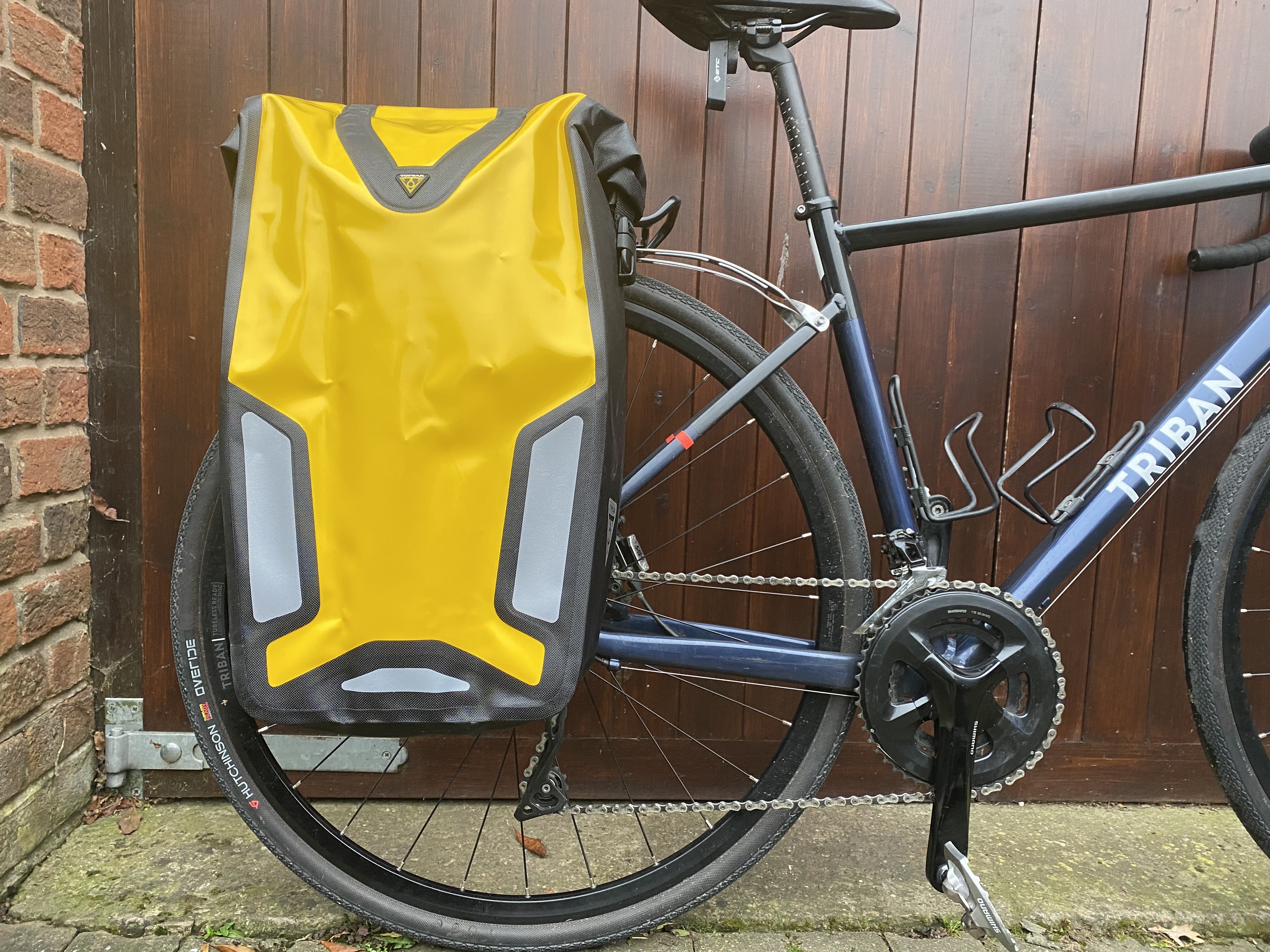
Specifications
Reasons to buy
Reasons to avoid
The Topeak Drybag DX is undoubtedly a pannier for anyone with a bulky load; its stated 25l capacity belies its seemingly bottomless form.
While reinforced side panels offer great protection for contents, they are removeable should you want a more pliable bag. It's 100% waterproof and seriously well-made.
We missed internal pockets and a shoulder strap but found the carry handle much more comfortable than something like Brooks'.
You may need to place the Drybag DX further back on your rack than other panniers; its depth could cause heel-striking.
Two colour options should satiate everyone; bright yellow for those wanting to stand out and black for those happy to blend in.
This is a single pannier purchase and we'd say be careful; fully loading it may make you feel a little unbalanced if you opt for just the one.
Read more: Topeak Pannier Drybag DX full review
Most versatile
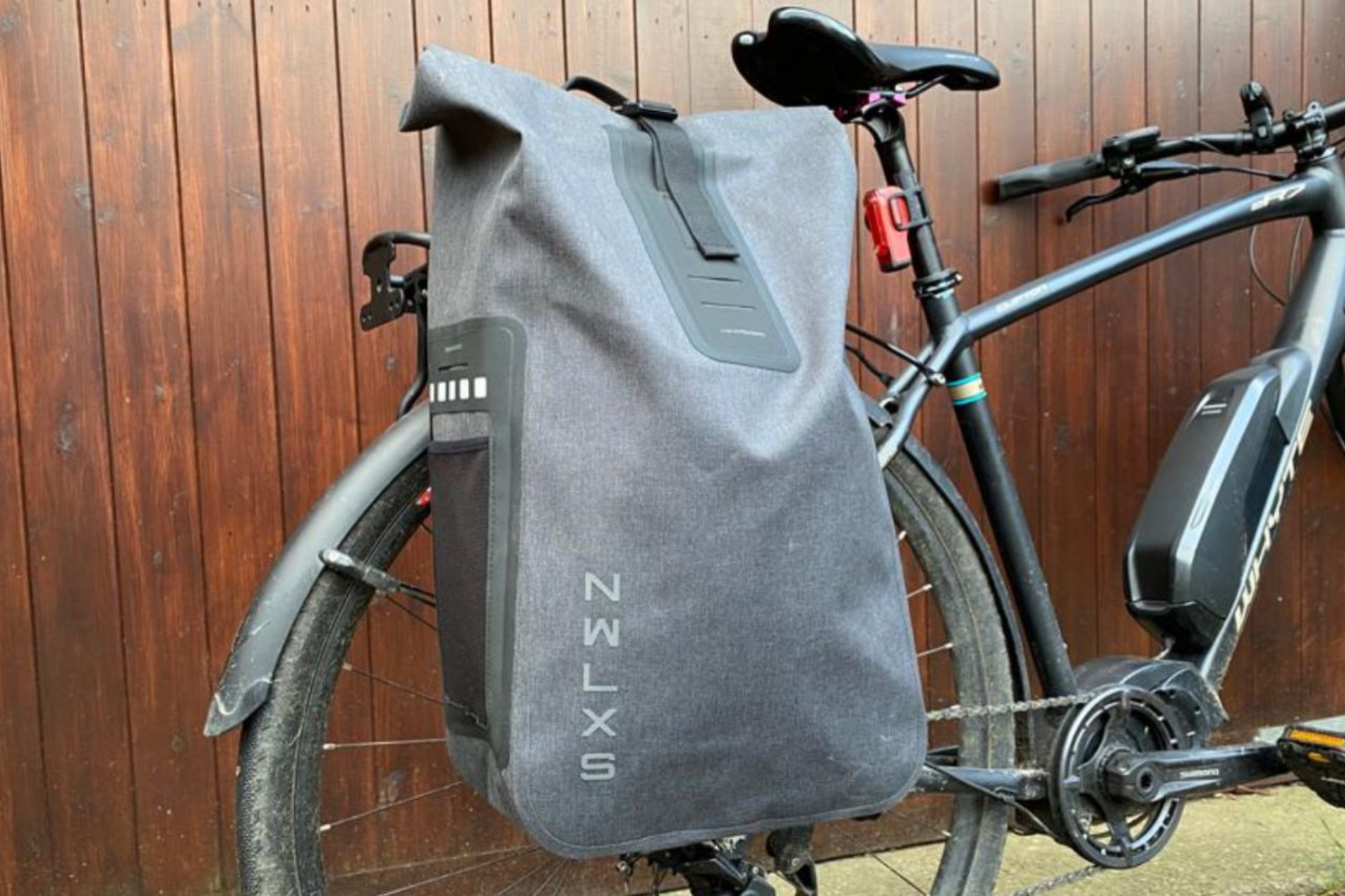
Specifications
Reasons to buy
Reasons to avoid
If you are commited to commuting and errand riding in dry weather, the New Loox Varo Backpack could be worth considering. It's a well-made piece of kit that offers decent capacity, thoughtful internal storage and is comfy as a rucksack.
The lower Velcro strap (for securing the pannier to a rack) is a little fiddly and the Railtime clamp system isn't as easy to use as some quick release panniers. Securing shoulder straps (if they aren't detached) is necessary while riding too. All of these are niggles but not major issues. Overall functionality is good with quick access, external pockets, reflective detailing and a detachable neoprene laptop sleeve.
Our tester felt that the Varo Backpack wasn't a great option for rainy weather, though; it's 100% waterproof but no one wants to put a damp and dirty pannier on their back. Stowing the shoulder straps in the pannier while riding and carrying a cloth to clean the rear is an option if you happen to venture out in the rain.
Read more: New Loox Varo Backpack full review
Honourable mention - Tailfin Ecosystem
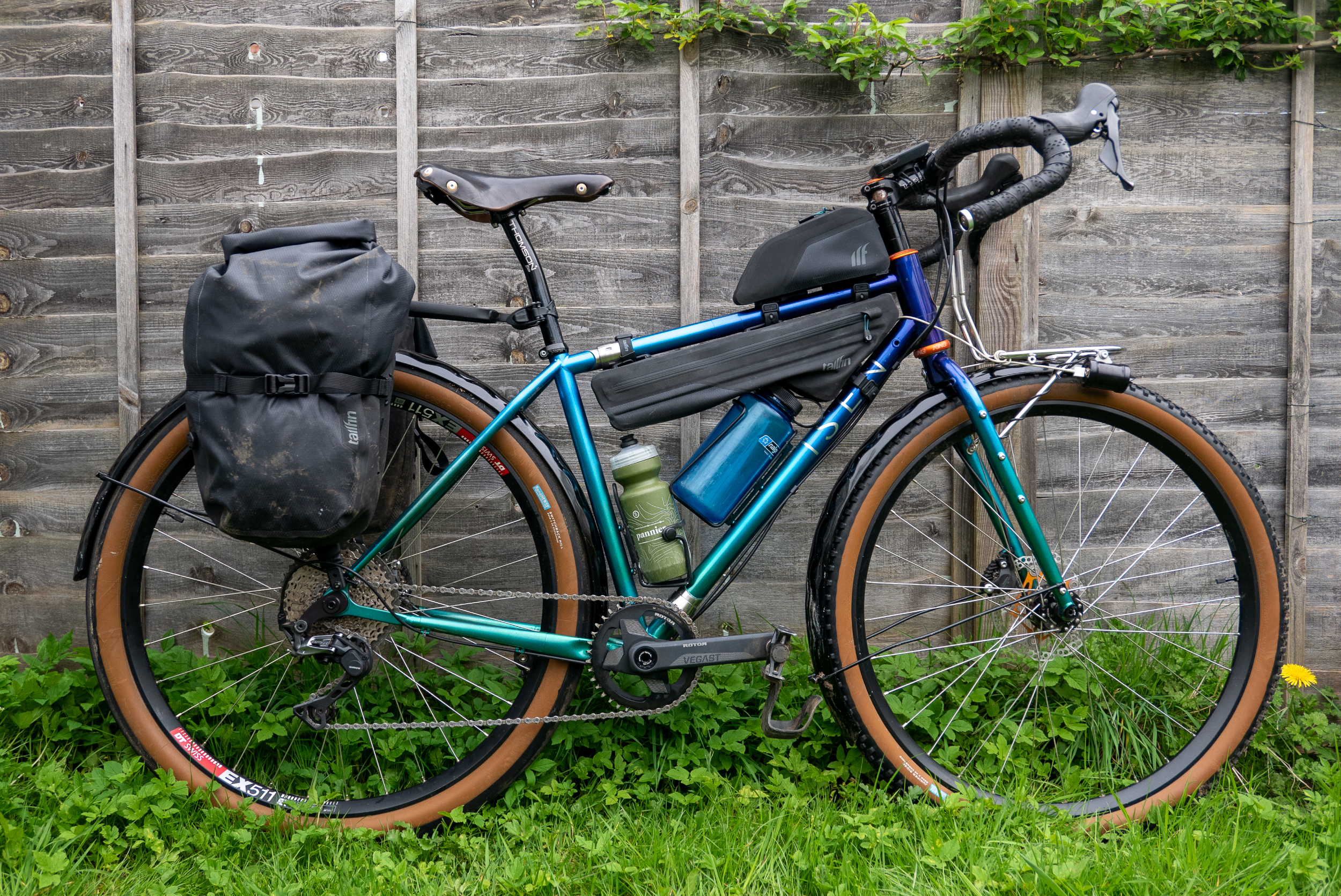
A unique blend of the old and end, touring and bikepacking
Given that Sam Jones recently reviewed several of the Tailfin ecosystem bags and gave one 4.5 stars out of 5, you might be wondering why it's not featured in our guide here.
Quite simply, while not only Sam but many in the Cycling Weekly team rate the Tailfin ecosystem highly like their Bar bag System, Simon put to the test. It is largely a proprietary system that doesn't offer much flexibility outside of Tailfin's own range of bags and accessories. While they cater to most eventualities and have proven extremely durable, there is a fairly hefty cost to all this. Which, unless you do a significant amount of bikepacking or touring, many won't see the benefits of this.
However, the reason it sits here in our honourable mentions section is because the system is very good, and to quote Sam, "Tailfin's ecosystem reminds me of Apple's approach: go all-in, and it works" Thats high praise, and certaitly if you are looking to get serious about packing up your bike for long tours and bikepacking, Tailfin should be on you list of considerations.
How we test
While the term touring might have fallen by the wayside with the rise of bikepacking and the best bikepacking bags, panniers have remained the go-to for commuters and those who choose a bike over a car for their weekly shop or running errands.
Thats precisely where the Cycling Weekly team of testers put most of these racks and bags through their paces. While we would all love to cycle off on big tours more regularly, it's not something we have the time for, especially not for work. However, some team members, like Tech Writer Matt, still prefer a rack as part of their bikepacking setup, which means some have been tested for longer tours.
What are we looking for when testing one of the best pannier racks or bags?
A large part of our testing is certainly directed towards installation, function, and packing. This really is because these three things go hand in hand. The Items you pack and the weight you pack impact installation and function. We do this by selecting a range of loads for each bag and setup. This differs slightly for each reviewer, but generally, it will entail a bulky load, a heavy load, and some delicate load; this could be anything from eggs to electronics.
Durability is the hardest part to test, and certainly, in the time we have to test products, durability will always remain a question mark. Ideally, we would use these bags specifically for years before sharing our thoughts; however, this is unrealistic. Therefore, our testing focuses heavily on cuts, abrasions, and any obvious areas where wear and tear could appear in the product's life. In some cases where our reviewers have either purchased these products themselves or had the chance to provide longer-term reviews, we have featured their latest words in this guide.
You can find out more on our How We Test via our dedicated page.
How to choose a Pannier Rack and Bags
Firstly, not all bikes, especially modern carbon fibre bikes, are designed to run the best pannier racks. Not to worry, as there are ways around this, with systems like the Old Man Mountain Elkhorn, which mounts to your axle. It's important to determine this first, as it narrows the racks you can purchase.
A compatible bike with eyelets for panniers will usually have them located at the top of the seat stays, and the lower mount will be near the dropout of your bike. This is often shared with a fender, but some bikes have a separate location. Bikes may regularly include a mount at the dropout for fenders but not on the seat stay. This doesn't mean you can't fit a rack; purchasing a seat clamp with integrated mounting points will be required.
Once you have worked out compatibility with your bike, there are only two other factors you need to consider when selecting a rack. The first of these is the overall weight you wish to carry. This significantly impacts the racks available; the lighter the load, the broader the options. However, it's worth remembering that the heavier the load, the more you will need to consider your bike's overall weight and how close you are to its load limit, as recommended by the manufacturer.
The second is how you would like to distribute the weight of your load; some favour a single pannier or dual panniers, and many just a top loading. This will depend on the bulk of your load, of course, but it is best to make sure heavy loads are lower down.
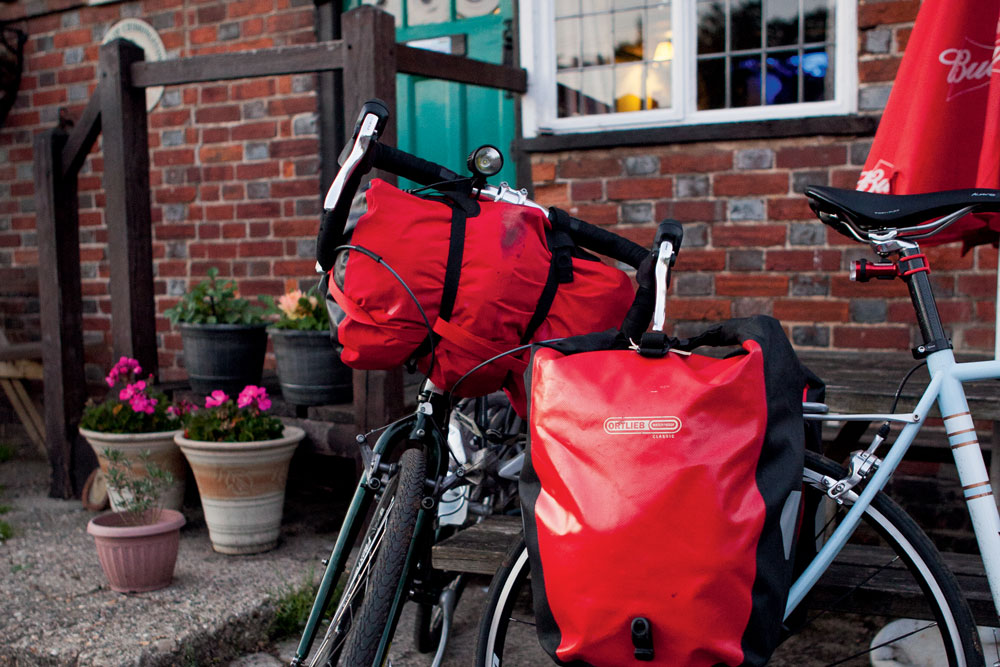
Okay, so now you have a rack, and it's fitted. How do you choose the best pannier bags? This is a little simpler, you will be glad to hear. As far as I am concerned, there are three factors in choosing bags.
1. The obvious one is capacity and size, how much do you need to carry. Remembering the clothes and shoes for a commute or tour can be bulky.
2. Durability and weatherproofing are big issues with panniers. Sitting so much closer to the road or trail, they will get wet or inevitably dirty. So, for those carrying electronics, for example, this might be more important than No.1.
3. Style might seem a bit silly; if a bag covers the first two points, why does it matter? Well, to most of us, it probably will. Keep an eye on things like light mounts and reflective features, though. These can be a real asset.
These three features are, of course, not an exhausted list. For example, is the bag easy to remove with a quick release system or strapped? I find that these features tend to be more specific to individual circumstances and don't specifically suit everyone's needs, or there is a strict rule on who does and doesn't need these features. Consider exactly what you need your bags to do before purchasing. In my experience, you almost certainly won't get it right the first time.
For those carrying lighter loads, even for commuting or long day rides, it is always worth considering the alternative. The best bikepacking bags offer a very wide range of options and excellant versatility, but they can be limited when it comes to bulky or awkward cargo.
Do I need a front or a rear rack?
The most common style of pannier rack is fitted to the rear of the bike – but you can also opt for a rack at the front too. If you're carrying a moderate load it's probably easier to go with the rear.
If you're taking a lot of kit, opting for both and distributing it so that the greatest weight is at the back but there's some at the front will improve handling. It also makes the bike easier to push around and carry and less front-light if the rear is loaded so that the weight is close to or aft of the rear wheel.
Just having a front rack and panniers may affect your bike's steering, so should be avoided.
Pannier Rack Materials
Racks are typically made of aluminium and titanium; however, several steel racks are available, which are usually much more economical options.
Aluminium - For all the same reasons, we use aluminium for a wealth of bicycle parts and accessories. It is light, strong, and easy to manufacture, which is why it is commonly used for bicycle racks. Aluminium offers the best balance between the rack's weight and capacity. Aluminium typically has much higher load ratings, with many offering 25kg/55 lbs and up.
Titanium - Ti racks, much like bicycles crafted from this magical metal, can be a thing of beauty. However, titanium racks have their limitations, primarily regarding maximum capacity. While titanium is very light, it is quite difficult to manufacture and weld. This characteristic makes them ideal for super-light pannier setups and ideal for those embarking on a long road tour or fast commutes; many might simply find them too expensive.
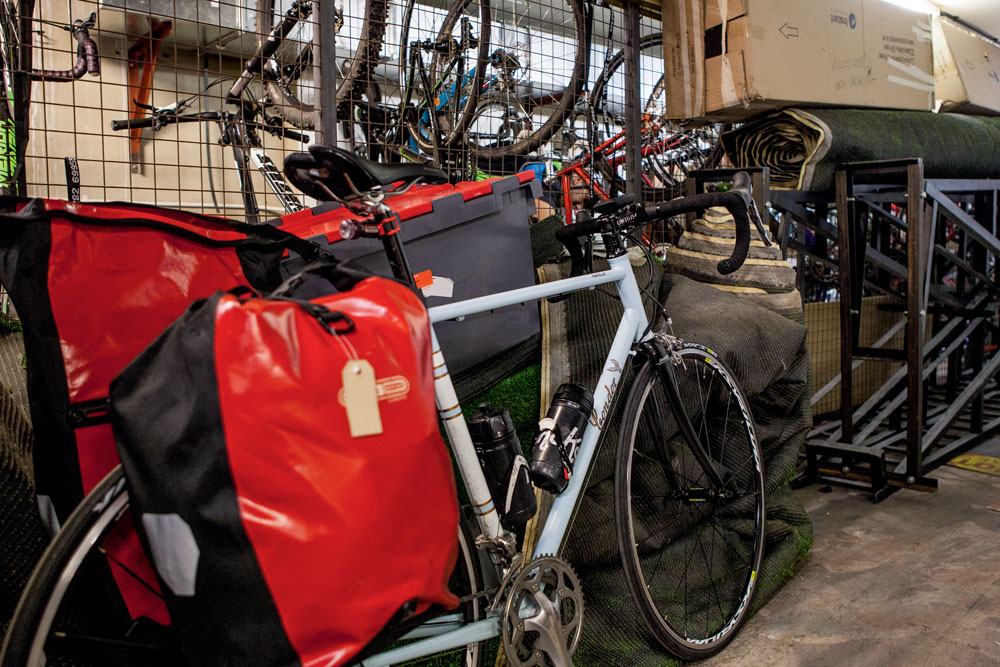
Pannier Bag Materials and Construction
Pannier bags are almost always made of some kind of durable or hard-wearing fabric like nylon ripstop, canvas, Cordura or polyester. The benefit of panniers is that they don't need to breathe like the best waterproof cycling jackets; they can utilize these much more durable fabrics and coatings to provide protection and waterproofing with very few downsides, other than a small weight penalty.
Just like jackets and other items claiming to be waterproof, it's not only the fabric you need to consider. A significant part of a pannier's construction involves how that fabric is joined and how the bag closes.
For increased durability and weatherproofing, be sure to look for welded and taped seams. While waterproof zippers are excellent, roll-top bags provide significantly easier access and better waterproofing.
Frequently asked questions about panniers
Why do bikepackers not use panniers?
This is largely due to compatibility. Bikepacking is primarily associated with multi-day tours on the best gravel bikes and the best road bikes, which do not always have mounts for panniers. This is becoming less of an issue with the introduction of axle-mounted systems like the Old Man Mountain Elkorn featured in this guide and the Tailfin Ecosystem, both of which offer hybrid systems that combine the best features of bikepacking bags and panniers.
There is certainly an argument that panniers are bulkier and heavier than an on designed for bikepacking. They also certainly don't perform as well once you head off-road, with the bags either not being stable enough or adding an extra extremity to your bike to be wacked by trees and rocks.
Is it better to fit panniers to the front or rear?
Three things affect where you might place your load: personal preference and what compromises you prefer to deal with, the size of the load you are carrying, and, of course, the riding you are doing.
If we have learnt anything from mountain bikers and the increased reach number we have seen in recent years, bikes tend to ride better off-road with a reasonable amount of weight on the front wheel. This is simply to help the tyre do its job and provide more grip.
So, unless you have a preference for front weighting, the general consensus is to use a rear pannier unless you plan to spend a significant part of your riding off-road. Of course, if you need to carry more items than will fit solely in the rear, then it's better to distribute the load.
Get The Leadout Newsletter
The latest race content, interviews, features, reviews and expert buying guides, direct to your inbox!
Michelle Arthurs-Brennan the Editor of Cycling Weekly website. An NCTJ qualified traditional journalist by trade, Michelle began her career working for local newspapers. She's worked within the cycling industry since 2012, and joined the Cycling Weekly team in 2017, having previously been Editor at Total Women's Cycling. Prior to welcoming her first daughter in 2022, Michelle raced on the road, track, and in time trials, and still rides as much as she can - albeit a fair proportion indoors, for now.
Michelle is on maternity leave from April 2025 until spring 2026.
- Emma Silversides
- Matt Ischt-BarnardEcomm and Tech Writer
-
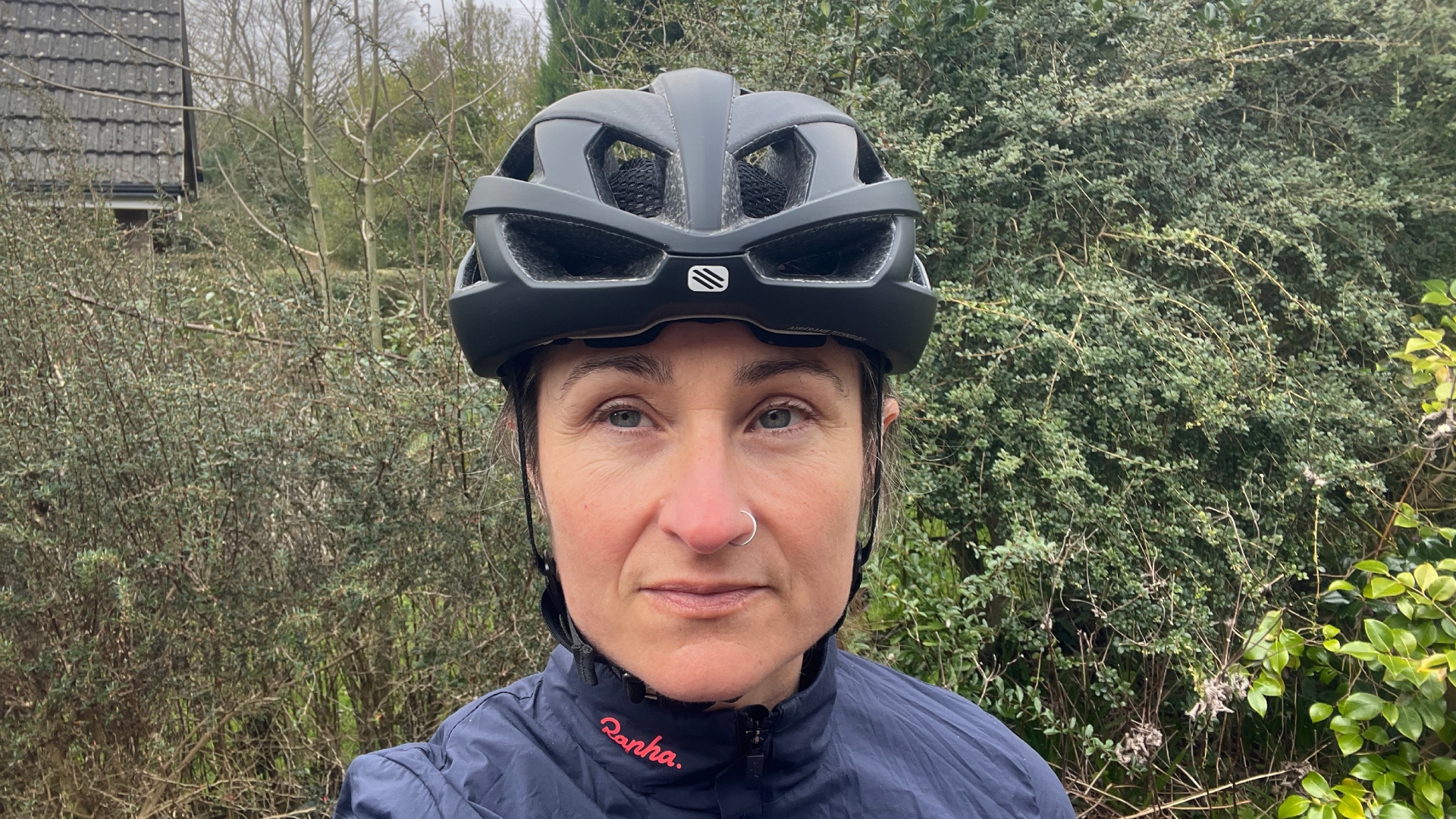 Rudy Project Rebel bike helmet review
Rudy Project Rebel bike helmet reviewRebelling against the solid shell oversized helmet fashion, the Rudy Project Rebel goes big on ventilation and breathability, but there is a weight penalty
By Hannah Bussey Published
-
 'I wanted to be world and Olympic champion – my parents made me feel that it was possible': Meet Sophie Capewell and her gold medal-winning mum
'I wanted to be world and Olympic champion – my parents made me feel that it was possible': Meet Sophie Capewell and her gold medal-winning mumSome mothers and daughters make memories together. The world-beating Capewells make history too. Tom Davidson meets the extraordinary duo
By Tom Davidson Published